WHO STOOD UP

IF...THE GREAT FIREOF LONDON HADNEVER HAPPENED?
the secrets of the disaster that rocked the ancient world
the blood eagle?
took history’s longest flight?


IF...THE GREAT FIREOF LONDON HADNEVER HAPPENED?
the secrets of the disaster that rocked the ancient world
the blood eagle?
took history’s longest flight?
Ever thought about becoming an examiner?
At Pearson we’re currently recruiting history examiners for the May/June 2023 exam series.
What are the benefits of being an examiner?
• Develop a deeper level of subject understanding and knowledge and the assessment process.
• Flexibility to work remotely around other commitments and increase your income.
• Help your students to progress by gaining insights into the assessment process which will help you to prepare your learners for their exams.
• Network with your fellow educational professionals, sharing great ideas and building a support network.
• Share your assessment expertise and unique insights with your whole department to encourage a consistent approach to marking across your whole team.

• Progression and CPD.
Full training and support will be provided.
In AD 79, the ancient world was rocked to its core when Mount Vesuvius awoke from its centuries of slumber and roared into life. As a huge cloud of ash obscured the Sun, citizens of Roman Pompeii fled for their lives, desperately trying to outrun the pyroclastic surges that raced down the side of the volcano. In this month’s Essential Guide, we’ve enlisted the help of archaeologist Dr Sophie Hay to explore what really happened in AD 79 and what secrets the site has yet to reveal. Turn to page 27 to get started.

Elsewhere, we tell the extraordinary story of how a group of women – including Mussolini’s daughter – risked their lives to expose Axis secrets during World War II, and whose bravery helped deliver justice at Nuremberg (page 51), and ask what might have happened had the Great Fire of London never broken out in 1666 (page 64).
Also this month, we showcase a stunning series of colourised images from a new book by digital artist Marina Amaral and historian Dan Jones (page 58), and introduce our new columnist, Dr Nell Darby, who will be investigating an intriguing cold case from history each month (page 17).
I’m also delighted to announce that BBC History Revealed print subscribers around the world will now get free access to all content on our HistoryExtra website. On the site you’ll find a huge range of articles, quizzes, picture galleries and hundreds of ad-free episodes of our podcast. Visit historyextra.com/FREEACCESS and enter your subscriber number. If you’re not yet a subscriber, then check out our offer on page 22 to see what you might be missing.
See you next month!
Charlotte Hodgman Editor


left in Dunkirk by the British in
X1
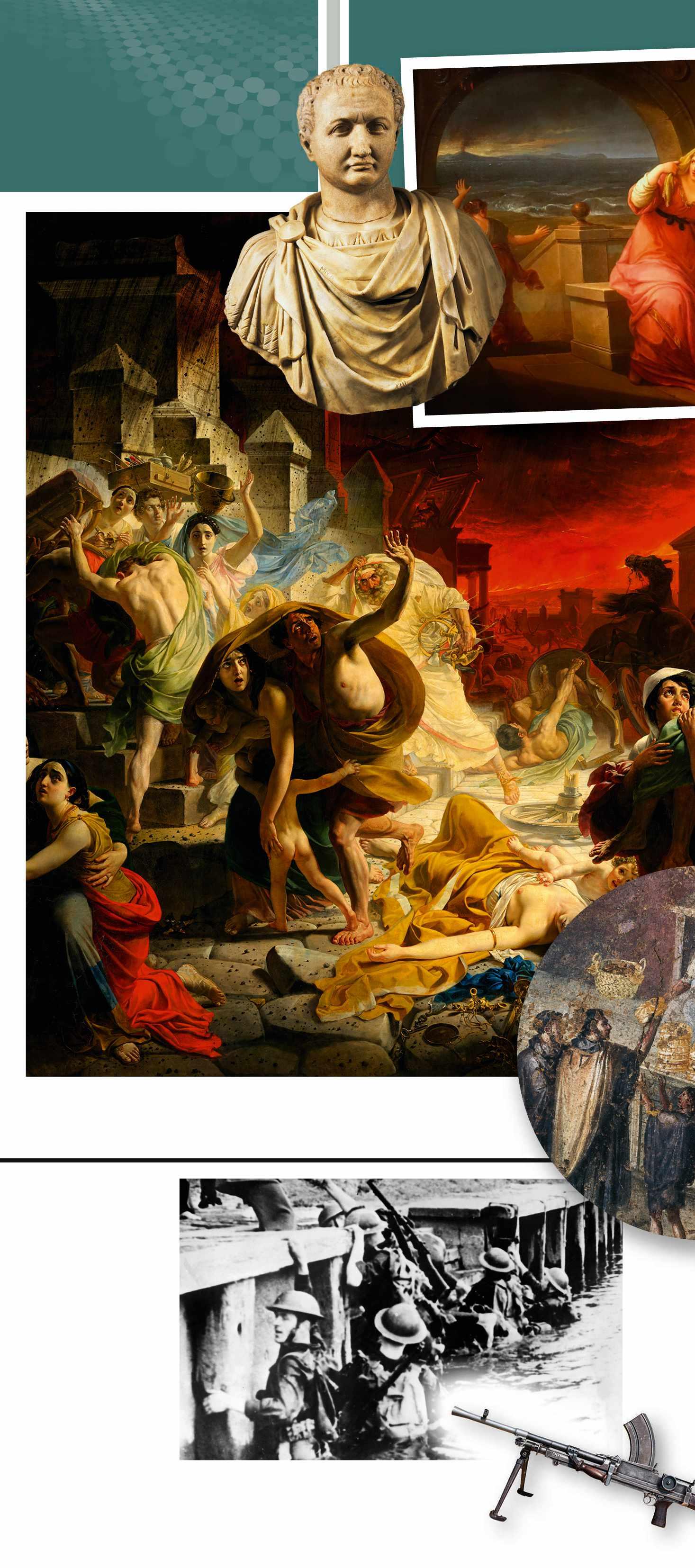
Dr Sophie Hay answers key questions about the doomed Roman city and the lives of its residents
Discover why pre-eruption Pompeii was undergoing a period of rebirth when tragedy struck
We chart the terrifying events of AD 79 that saw the city transformed into an ash-covered hellscape
Fire up the time machine and stroll the streets with our guide to the city’s major landmarks
Find out how Pompeii’s rediscovery saw it become one of the world’s greatest archaeological marvels
Dr Joanne Berry shares a collection of tidbits about Pompeiian life: from gardening to graffiti
Dr Sophie Hay reveals how new technology is shaping the way we examine Pompeii today 49 Get hooked
Take your knowledge of Pompeii further with our guide to books, podcasts and TV shows to explore next

We tackle the myths behind the dramatic World War II evacuation
The story of how Mussolini’s daughter, a German spy, and an American banker’s wife outwitted the Nazis
G From the first rumbles to the final pyroclastic surge, find out how Mount Vesuvius unleashed its fury in AD 79
Our history of art series continues with a look at a Vermeer masterpiece
We share highlights from a new book containing colourised images of 19th and 20th-century female pioneers
64 What if... the Great Fire of London hadn’t happened?
G Why tactics and equipment were not to blame in France in 1940
re


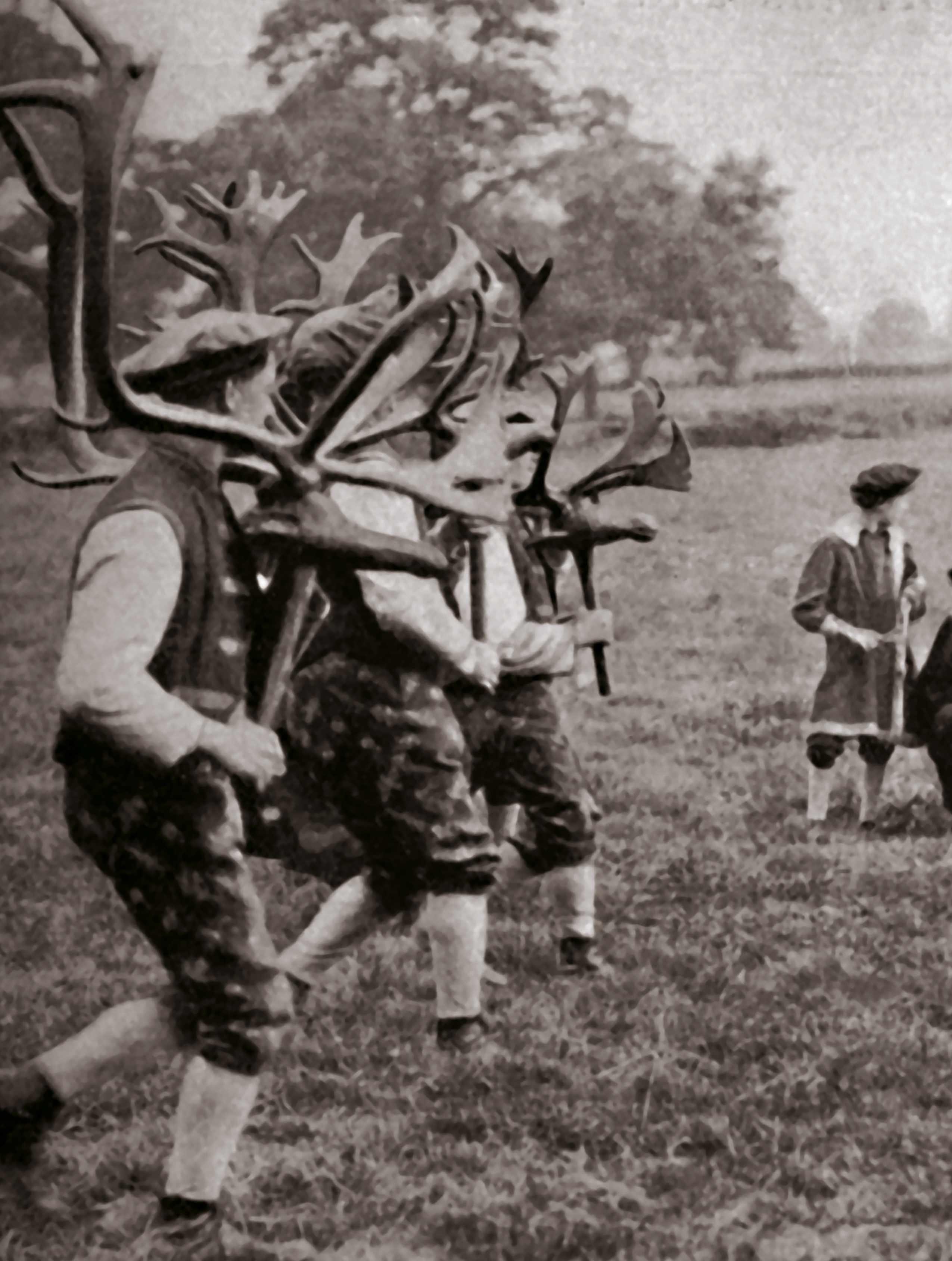

Of all British folk dances, this surely has to be one of the most... eccentric. Believed to date back to 1226, the Horn Dance still takes place in the Staffordshire village of Abbotts Bromley on the first Monday after the first Sunday after the 4 September – also known as Wakes Monday. Confused yet? The dance involves 12 people: six men wearing reindeer antlers, a hobby horse, a dancing fool, a man dressed as Maid Marian, a bowman and two musicians. It has apparently only been cancelled twice in its long history: in 2020, during the Covid-19 pandemic, and an unspecified year during the 1920s, when a dancer died and the accordion player fell ill.


After discovering that all seven of her daughters possessed the ability to grow luscious long locks that were the envy of women (and men) everywhere, Mary Brink Sutherland decided to cash in on her children’s talent. Every night, she would apply a foul-smelling concoction of her own making to the hair and scalp of each daughter, and hey presto, a lucrative hair-growing business was born. The sisters’ collective hair length of almost 37 feet drew admirers from far and wide, and they were eventually signed by legendary showman PT Barnum, touring alongside Jumbo the elephant with Barnum and Bailey’s famous circus.


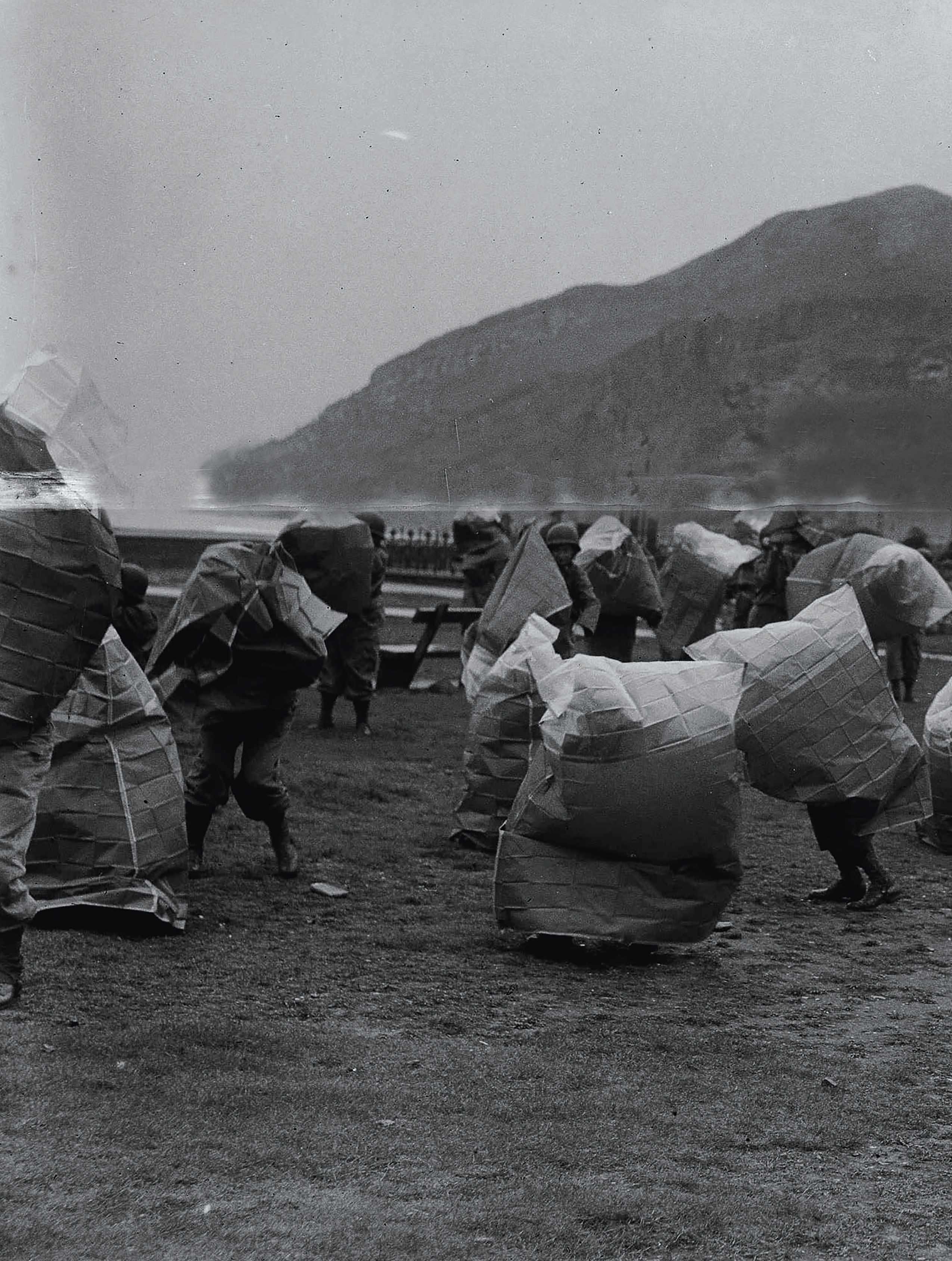
The prospect of gas warfare during World War II was an ever-present threat, so it was important to be prepared: surviving a chemical attack could come down to mere seconds. Gas masks were issued to the UK population from 1938, with official advice being to carry them at all times. Other methods of protection included cellophane gas ‘bags’, such as those seen being deployed here by US army nurses during a drill at a field hospital training site in England. Designed as a wipe-clean material in 1908, it is unlikely that the inventor of cellophane, Jacques Brandenberger, could have ever foreseen the life-saving properties of his handy kitchen textile.
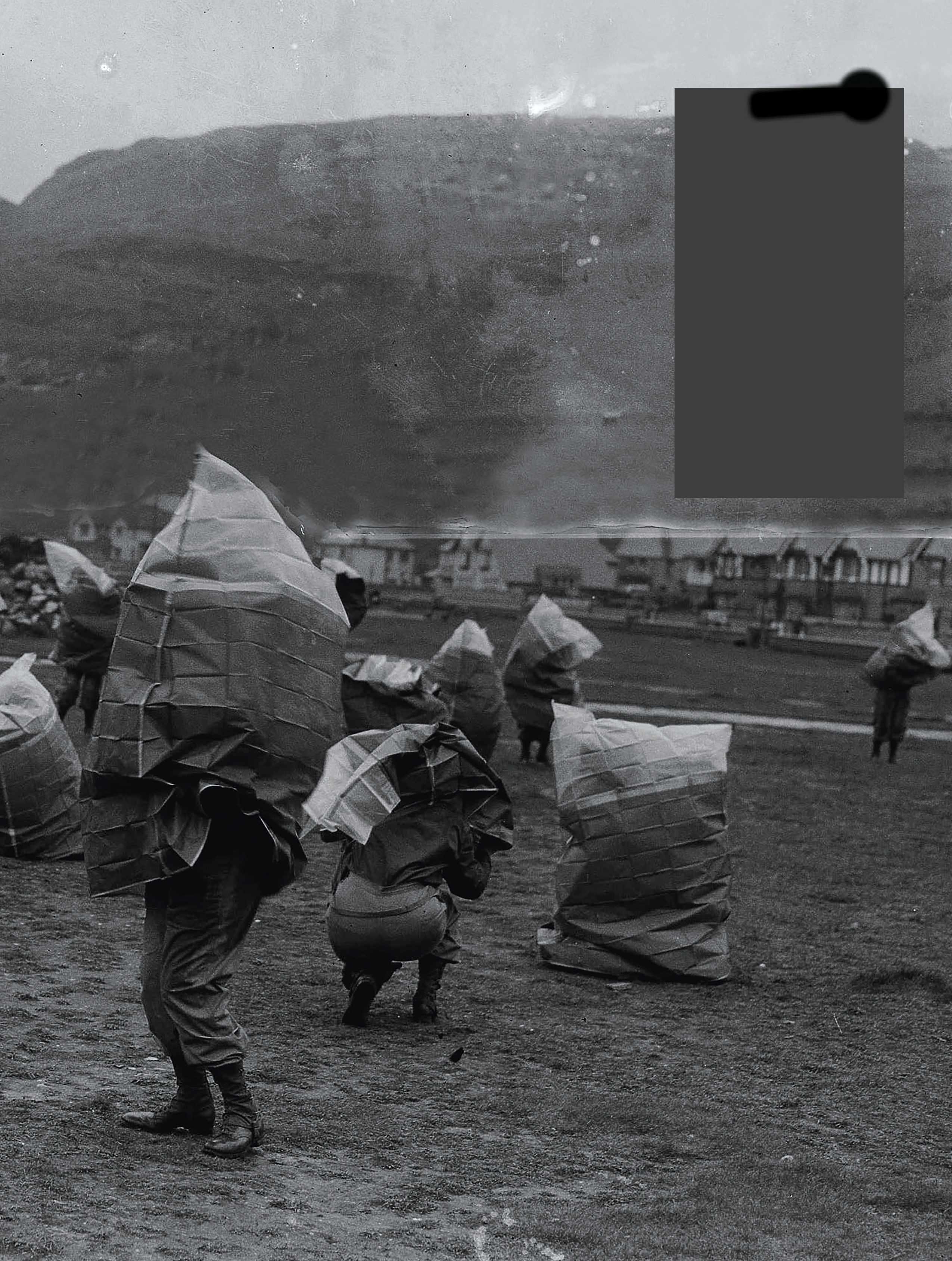


The ancient Maya may have played games using balls made from the ashes of their dead rulers, an archaeologist has claimed.
Juan Yadeun Angulo came up with the theory after studying a crypt in the ruined city of Toniná, Mexico, where researchers recently uncovered 400 urns filled with plant roots, rubber, coal and burned human remains. The archaeologist believes the rulers’ bodies were cremated in the crypt and combined with other substances to create giant balls used for playing pelota –a sport resembling a mixture of football, volleyball and basketball. Mr Yadeun told the Reuters news agency that the Maya may have wanted their rulers to be “converted into a life force, something to stimulate their people”.

The remains of an Iron Age settlement in Orkney are being destroyed by coastal erosion, say archaeologists. Dr Stephen Dockrill, who has been digging at the site along with fellow staff and students from the University of Bradford, claims that parts of the settlement – located at the Knowe of Swandro, on the island of Rousay – are being “sucked out like a vacuum” by the sea. Despite the challenging conditions, the archaeologists have uncovered a range of items, including jewellery, bone tools, pottery, and a glass toggle bead.
A project led by Historic Environment Scotland (HES) has revealed new information about the battle of Culloden, where Bonnie Prince Charlie’s rebel troops were defeated by a loyalist army in 1746. Following a survey of the battlefield, near Inverness, researchers discovered that the left flank of the Jacobite army was arrayed across an area known as Culloden Parks, close to Culloden House – much further west than previously believed. The HES team also found that a significant portion of the parks’ boundary walls have survived, even though the site was thought to be lost.

The debate over whether the British Museum should return the Parthenon Marbles to Greece has intensified, with museum deputy director Jonathan Williams stating the institution was open to a “Parthenon partnership” with the country. While the museum has not formally committed to returning the sculptures, Williams said: “There are many wonderful things we’d be delighted to borrow and lend.” Greece’s prime minister, Kyriakos Mitsotakis, said he was open to discussion, but warned, “Baby steps are not enough. We want big steps.”
The record-setting price paid at auction for the jacket Buzz Aldrin wore on the Apollo 11 mission to the Moon in 1969

A Lincolnshire castle owned by the National Trust is older than previously thought, claims a new study. Researchers working at Tattershall Castle, near Sleaford, uncovered evidence suggesting the landmark was constructed in c1431–51 – at least 15 years earlier than past estimates – making it one of the first brick buildings in the country. The study, led by archaeologist James Wright as part of his PhD research at the University of Nottingham, also claims that the roof turrets of the great tower were used as banqueting suites.
MAIN: The 15th-century castle, near Sleaford, was studied as part of a project led by buildings archaeologist James Wright
BELOW: A fireplace located on the first floor of the castle’s great tower
In early November 1956 the Suez Canal in Egypt was choked with ships. But these vessels weren’t sailing down the 120-mile waterway that connected the Mediterranean and the Red Sea. In fact, they weren’t capable of sailing anywhere at all: their masts were plunging at sickening angles, and water splashed over their decks. All of them had been wrecked – sealing off one of the most profitable waterways in the world.
The decision to block the canal had come from Egypt’s president, Gamal Abdel Nasser. While you might assume that a waterway running through Nasser’s country had always been owned by the Egyptians, it had, since its completion in 1869, belonged to the Suez Canal Company: an organisation controlled by the British and the French. To protect the canal – which was a great asset for the imperial powers, as it gave easy access to oil deposits in the Middle East – the British stationed troops along its waters.

The arrangement had bred resentment among the Egyptians for decades, turning the situation into a powder keg. The spark to ignite it finally came in the summer of 1956, at the height of the Cold War. Nasser was determined to build the Aswan High Dam, which he viewed as a key step in industrialising the country, and the Americans and British had promised to pay for it. But America was displeased by Egypt’s friendship with the USSR, and took US money off the table.
Nasser had to get creative. If the west wouldn’t pay for it, their waterway would. In July 1956 he took control of the Suez Canal Company and announced he would charge ships for the privilege of using the route – this toll would finance the dam in five years.
ABOVE: A French paratrooper takes time to clean his rifle after landing in Egypt in November 1956
ABOVE RIGHT: An Egyptian boy surveys the damage caused by heavy fighting

The British and French were furious Negotiations ultimately led nowhere, with Nasser proclaiming in September: “We shall defend our freedom and independence to the last drop of our blood ” The European powers took him at his word Britain and France hatched a secret plan with Israel which had its own grievances with Egypt, as Nasser had denied them access to the Straits of Tiran – to bring the waterway back into their clutches, and perhaps even depose Egypt’s president while they were at it.
On 29 October, Israeli troops stormed into the Sinai – a desert region of Egypt –and marched straight towards the canal. Britain and France, both on the United Nations Security Council, then feigned shock and positioned themselves as
peacemakers. If Egypt and Israel didn’t agree to stop fighting, the two European powers would also send troops to the canal – but these soldiers would, so they claimed, only be there to secure a ceasefire. In early November a swarm of Anglo-French soldiers landed and started to occupy the canal zone. The Egyptians staunchly defended their land against the “peacekeepers” and the Israelis, and thousands were killed.
The international community smelled a rat. The American president Dwight D Eisenhower was particularly enraged, as the British hadn’t bothered to clue him in to their plans. By going guns blazing into Egypt, he feared that Britain and France would help convince Middle Eastern countries to side with the Soviets. With the United Nations threatening to impose sanctions, and with Eisenhower calling on
the International Monetary Fund to deny Britain financial assistance, UK Prime Minister Anthony Eden soon realised that dragging out the conflict would bring the country to its knees. Anti-war protests were also blooming at home, with some people in Eden’s Conservative Party questioning the decision to go to war.



Two days after the invasion began, Eden reluctantly agreed to a ceasefire at midnight on 6/7 November. The United Nations gave Egypt total control of the Suez Canal, dashing Britain and France’s hopes for good.
Nasser came out of the conflict as a hero for Arab and Egyptian nationalists. Although he still forbade Israel to use the canal, he did allow them to sail ships through the Straits of Tiran. The clear
losers were Britain and France, with their reputations left in tatters and Eden forced to resign (even if his exit from Downing Street was officially put down to health reasons). If the Sun had already been setting on the British empire, the Suez crisis saw its rays dip below the horizon. d

Aimed at helping newcomers from India and Pakistan adjust to life in the UK, the BBC launches a programme named InLogonSeMiliye (Let Me Introduce You) on both TV and radio. Delivered in a mixture of Hindi, Urdu and English, each of the episodes blends light entertainment and practical advice to help listeners navigate a range of social scenarios. In early 1966, the programme is renamed Apna Hi Ghar Samajhiye (Make Yourself at Home).


On 3 October the poet is found slipping into unconsciousness in a stranger’s dirty clothes in Baltimore and is promptly moved to Washington University Hospital. Four days later – after bouts of hysteria and screams for a person named “Reynolds” – he succumbs to his ailment.

Two months after setting sail from Spain, the Italian-born explorer clambers off his ship to investigate an island the native population calls Guanahani (most likely San Salvador), in what’s now the Bahamas. In his diary, he writes wondrously of the “very green trees and many ponds and fruits of various kinds.”
LOOK BACK AT OTHER
THAT HAVE
IN
THROUGHOUT
100TH
WITH
DOWN
“President Eisenhower was particularly enraged, as the British hadn’t bothered to clue him in to their plans”
Israel’s invasion of the Sinai Peninsula was portrayed as a ‘shock’ for Britain and France – but it was actually part of their own plans to take back the canalA band of Israeli troops pose alongside a portrait of President Nasser they have taken as a souvenir The United Nations supported Egypt’s control over the canal, much to Britain and France’s dismay

I am King Louis XVII, supreme monarch of France, but my realm of influence is no bigger than a dank, rat-infested storage closet in the tower of a medieval castle.
After his father and mother are beheaded in the French Revolution, 8-year-old King Louis XVII is sealed into a pitch-dark closet and isolated from all human contact. As he endures the brutal consequences of his father’s misguided reign, the young king wonders why the French people hated his parents so much and how he might rise above their moral failings.
Athena’s Shield tells the story of the Spartacus Slave Revolt through the eyes of a teenaged girl, daughter of the famed gladiator and rebel leader Spartacus, as she and her friends carry out missions of reconnaissance, espionage, and sabotage.
“Athena’s Shield draws the reader instantly into the everyday life of an alien and fascinating culture, one with problems that echo our own.”
Richard P. Martin, Professor of Classics, Stanford University





















As a crime historian, I love investigating historical cold cases, as they can offer a real insight into our ancestors’ lives, and the history of crime, as well as enabling me to play detective in working out what might have really happened in a case. I’m going to be examining some of these cases in BBC History Revealed – and this month, I’m looking at a court case that shows how there are two sides to a story, and that the initial account should not always be believed.
Late Victorian London was home to many private detectives and detective agencies, all eager to be commissioned to find evidence of misdeeds, from adultery to fraud. However, when a client was unhappy with the work done on their behalf by a detective, they might refuse to pay them. This is what had happened when, in 1896, private detective Antonia Moser sued Cordelia Warde Lamond at the High Court, for work carried out by her detective agency. In court, Miss Lamond denied employing the agency, but then said that if she had, no work had been done, and that if work had been done, the agency’s charges were “excessive and unreasonable”. Miss Lamond was covering all bases with her defence.
Records show that Cordelia Lamond was also involved in a fracas at the Hotel Cecil, located on London’s Strand

Antonia Moser stated that she had been employed to find out who had been making slanderous comments about her client. She charged a daily fee for each of her agency’s detectives to work on the case, plus expenses, and a higher amount for her partner and fellow detective, Maurice Moser, to investigate - inexplicably - from Cairo.
Miss Lamond thought the work was too costly, and much of it unnecessary. The case was sent to the Official Referees Court, but there is no record in the press of what was decided. However, other cases involving Miss Lamond do provide clues as to what was going on. Cordelia was 40 at the time of the Moser case, and had inherited her family’s fortune. For several years, she had been living in a series of London hotels; after staying at the Hotel Cecil for eight months, in July 1897, she assaulted a porter following instances of erratic behaviour, and multiple attempts to evict her.

A year later, in 1898, Cordelia Lamond was the subject of a Commission and Inquisition of Lunacy held at Chancery, after her relatives alleged she was squandering her fortune in useless litigation. The case had originally been brought two years earlier - around the same time that Antonia Moser had sued her - but Cordelia had refused to attend court and was arrested for contempt. When she finally appeared, “Miss Lamond declared that she was not Miss Lamond” The jury found otherwise, also returning a unanimous verdict that she was of unsound mind, incapable of managing her own affairs Records suggest that Cordelia spent the rest of her life in private asylums
The press had concerns about the private detective industry, and the Lamond case suggested that the Moser agency was unethical in its dealings with her Antonia Moser charged
Victorian courtrooms, such asthe one depicted in this 1882illustration, might have felt intimidating for some women
Cordelia a lot of money ostensibly to prove slander; yet her client may only have been suffering from delusions of being talked about. If it was clear that she had a mental illness, and that the Mosers went along with her allegations simply to make money off her, this would reinforce press concerns about private eyes.
Antonia Moser was a staunch suffragist, though, and it is hard to square her views about women’s equality with someone who was willing to take advantage of another woman. Perhaps Cordelia simply appeared to be a slightly eccentric client, who insisted the Mosers carry out her commission; but work was work, and ethics were possibly hard to maintain when a private detective’s bills needed to be paid. d
LISTEN
A new podcast, LadyKillerswithLucyWorsley, explores the crimes of Victorian women from a feminist perspective: bbc.in/3d27ylb

The South Sea Bubble was a period of speculation frenzy and collapse on the British stock market, revolving around the fate of a single company. For years, the South Sea Company had been at the centre of a complex and tangled web of financial manoeuvrings; deliberately obfuscated dealings around selling shares and government debt; the exploitation of publicity and hype to inflate stock prices; as well as bribery, corruption and the slave trade.
It worked for a while and stock prices skyrocketed in 1720, until the bubble burst. Investors were ruined and an inquiry had to be held. While the South Sea Bubble went down in history as the cause of a total financial crash, that wasn’t actually the case: it certainly had its losers, but it had its winners, too.

The Bank of England formed 26 years earlier had grown into a powerful institution as the sole lender to the government. It was, however, controlled by one of the two main political parties, the Whigs, so when Robert Harley became the new Tory chancellor of the Exchequer in 1710, he looked for other means of making money With Britain engaged in expensive wars and the government debt at around £9m, funds were preciously needed.
Harley gave the job of organising the Bank of England’s lotteries to John Blunt, the less-than scrupulous director of an unofficial bank (and sword
BELOW: The company survived long after the crash – this share certificate is from 1784

manufacturer) called the Hollow Sword Blades Company While the ironically named Blunt had great success selling lottery tickets, the two men devised a grander scheme to make serious money
That’s where the South Sea Company came in
It formed in 1711 with the purpose of consolidating the government’s debt In return for taking on and paying off this debt, the company would be granted a monopoly on trade between Britain and Spain (particularly the sale of slaves) in the ‘South Seas’ around South America. This idea had a major problem, though: Britain was at war with Spain and in no position to dictate the trade there, unless favourable terms were reached in peace talks.
The Peace of Utrecht – a series of treaties signed between 1713 and 1715 – did indeed grant the South Sea Company a monopoly, or Asiento de Negros, for 4,800 enslaved people a year, but the Spanish put a tax on the ‘cargo’ and permitted only one ship at each port annually for other goods. The company
The company gained a monopoly on the South Seas slave trade following treaties signed in Utrecht
ultimately transported tens of thousands of slaves, helped by the Royal African Company and Royal Navy protection. Yet the restrictions meant profits would never be enough to resolve the debt.
Instead, what proved more lucrative was getting investors enthused. From its headquarters on Threadneedle Street in London, the company launched a propaganda campaign to sell shares: promising riches and marketing the business as a patriotic venture. Success for the South Sea Company would be a success for Britain. By 1718, nobles, politicians and celebrities, like author Jonathan Swift and scientist Isaac Newton, had invested, and George I had been appointed as governor.
It was a cunning, if convoluted, scheme: the company encouraged all the individual people who held an ‘instrument of debt’ (essentially, an IOU from the government) to swap them for shares. In other words, swapping the hope of getting paid back by the government for the promise of getting payouts from the company’s profits.
Every year, investors would also receive a dividend. But that didn’t mean the company was out of pocket since the government paid interest on the total debt taken on, set at a high six per cent.
Simply, the point was to keep the share value going up – and the more shares sold, the higher it got. To that end, the company introduced several other reckless, legally questionable methods, including lending people its own money so they would buy shares. In terms of the stock market, this created the illusion that share demand was high, which inflated the value. And if people made personal fortunes by exploiting the market or politicians had to be bribed to ensure their support, so be it.
Converting debt into shares was working so well that the South Sea Company hatched an audacious plan to take on
ABOVE LEFT: The company was based at South Sea House on Threadneedle Street – the heart of London’s financial district
ABOVE RIGHT: An 1847 painting by Edward Matthew Ward imagines the feverish scenes in the capital as investors clamoured to buy shares

most of the unconsolidated national debt, which stood at over £30m. If successful, it would become the biggest financial institution in Britain. Never mind that its actual profits from the slave trade were nowhere near strong enough to justify this. This set off a massive boom in the stock price, from £128 per share to over £1,000 in August.
Other businesses tried to get in on the act, which resulted in a flurry of speculative
and unwise investments. The Bubble Act of June 1720 put a stop to this, and essentially removed all competition to the South Sea juggernaut, but this didn’t last long. By September, the market collapsed and company shares plummeted to £124 by the end of the year.
Thousands of investors were ruined and the resulting parliamentary investigation revealed widespread corruption. The Bank of England stepped in as company directors were disgraced and had assets seized; government members were impeached; and the chancellor of the Exchequer, John Aislabie, was imprisoned in the Tower of London. As for Blunt, who had been made a baronet earlier that year, he had cashed out before the collapse.

It was one of the first economic bubbles known to the general public –and came at the same time as another one in France – so was pounced on by satirists, writers and artists, including the famous William Hogarth. It also inspired a crusade by politician Robert Walpole to restore faith in the financial system. Despite being a South Sea investor himself, he made stern examples of a handful of those implicated, while ensuring others (his friends and the king, say) were left alone. In fact, Walpole did such a thorough job that he grew into power and popularity to become the first de facto prime minister of Britain. d
Melvyn Bragg and guests discuss the South Sea Bubble in an episode of In Our Time originally broadcast on BBC Radio 4 in 2012: bbc.co.uk/sounds/play/b01pcs5g


“The point was to keep the share value going up – and the more shares sold, the higher it got”Sir Robert Walpole (farleft) in the House of Commons. Walpole, considered the first de facto prime minister, had risen to prominence during the bubble crisis

The long-serving director of the FBI sat at the centre of a web of surveillance and information gathering for nearly five decades. But how did he come to wield so much power? And why were his agents so feared?
The Roaring Twenties, the Great Depression, Prohibition, World War II, the Cold War, sixties counterculture, Kennedy’s assassination, the civil rights movement, Vietnam – as the United States of the 20th century moved from monumental event to monumental event, one man was there; an ever-present man wielding immense power and a master of secrets. He was at the centre and at the fringes, both a household name and an enigma in the shadows.
John Edgar Hoover served as director of the Federal Bureau of Investigation (FBI) for almost 48 years and under eight presidents; an illustrious, if controversial, career that began in 1924. Only 29 years old when appointed, his mission was to transform a weak and small Bureau of Investigation (it became the FBI in 1935) in disarray into an expert crime-solving outfit. It was an inspired appointment.
A SHORT RISE TO INFAMY Hoover brought all the self-determination, unerring focus and ambition that got him so far so young. Born on 1 January 1895, he overcame a childhood stammer by learning to talk quickly; impressed on the school debate team with “cool, relentless logic”; and studied law at night classes, earning his degree in 1916 and master’s in 1917. That year, the same year the US entered World War I, Hoover managed to secure a job at the Department of Justice. By the age of 24, he headed an entire division and coordinated raids to round up suspected radicals and communists, arresting thousands and deporting hundreds.
As director, Hoover implemented sweeping changes and a professional standard that established the Bureau as a powerful arm of federal law enforcement. Laboratories were improved for forensic analysis of handwriting, fingerprints and ballistics, and, perhaps his most significant change, Hoover devised systems for meticulous record keeping.
What his FBI needed now was a huge, publicity victory for Americans to get behind.
Enter the Prohibition era and the rise of organised crime during the 1920s and 1930s. Using the newspapers and an influence in Hollywood, Hoover made sure gangsters like John Dillinger and ‘Baby Face’ Nelson were no longer romanticised antiheroes, but villains. And his agents – G-Men, from ‘government men’ –were hot on their heels. It worked; the decade was the making of the FBI.

It did not matter that Hoover did not go after major organised crime and denied the Mafia’s existence. Budgets and resources expanded, and the G-Men were hailed as frontline soldiers. When war actually came, the FBI were handed a farreaching mandate to investigate those suspected of being domestic or foreign “subversives”.
By the end of the war, its authority had extended from crime fighting to national security, and Hoover oversaw a nationwide hive of surveillance and information gathering. President Truman feared the FBI of becoming a “Gestapo”. But Hoover’s remit only grew as Cold War tensions escalated, which suited him due to his staunch anti-communism. He relentlessly
worked to root it out in the US, almost unchecked, until his overzealous investigations soon looked like reckless, personal persecutions.
Hoover directed his agents to employ an array of illegal methods to go after suspected radicals, or anyone he told them to go after. Wiretapping and violence were all part of the FBI’s covert COINTELPRO (Counterintelligence Program) and not just against suspected communists, but, from the 1950s, civil rights activists.
Such tactics allowed Hoover to remain as FBI director for decades, with deputy Clyde Tolson at his side. Presidents dared not get rid of him in fear of the evidence he hoarded away. More than anyone, Hoover understood that true power lay not in armies and weapons, but information and perception. His personal life was kept a mystery, and he lived only with his mother until her death.
Hoover passed 70 and kept working, but his aura waned. In 1971, a break-in at an FBI field office by Vietnam War protesters and subsequent articles in The Washington Post revealed damning details about the Bureau, including how every agent was tasked with monitoring black people for no reason.
And yet, he was still director of the FBI when he died in 1972, aged 77. His final instruction was to his secretary to destroy his ‘personal file’: a cache of papers alleged to contain highly incriminating material. Hoover had cultivated an environment of paranoia, and of using any means to act on that paranoia. It was a legacy felt six weeks later when the Watergate burglary took place. The scandal fomented distrust in US institutions and shone a light on a world in the shadows; a world Hoover had ruled over for nearly half a century.
WORDS: JONNY WILKES

FAR
Hoover poses with a submachine gun during the 1930s. With a knack for PR and spin, the FBI director overhauled the Bureau’s image and made it into a formidable fighting force that few people dared interfering with – not even presidents

“More than anyone, J Edgar Hoover understood that true power lay not in armies and weapons, but information and perception”
W Receive a £10 M&S gift card to use towards any purchase in stores across the UK or online*

W Save 39% off the shop price –pay just £19.99 every 6 issues when you subscribe by Direct Debit*
W Free UK delivery direct to your door, at no extra charge!

W Never miss an issue of our actionpacked magazine, suitable for all members of the family
As a subscriber to BBC History Revealed, you’ll get FREE access to HistoryExtra. com – our one-stop shop for everything history, where you can watch on-demand videos, download an exciting selection of digital magazines, test your knowledge with a range of history quizzes, and much more!






Britain in the early years of World War II has often been perceived to have been full of Blimpish commanders, out-of-date equipment and antiquated, stuckin-the-mud tactics.
In fact, the British Army’s equipment in 1940 was certainly a match for that of the Germans. The Bren light machine gun did not have the rate of fire of the German MG 34, but was solid, accurate and more dependable than its far friskier German rival. Meanwhile, the new British uniforms were the most modern in the world at the time, and unlike anything any soldier had worn before.
The British Expeditionary Force (BEF) was also entirely mechanised, which was certainly not the case for the German Army. In fact, of the 135 German divisions used in the attack in the west, only 16 were mechanised; the other 119 used horses and their soldiers’ own two feet. British tanks were mostly superior to those of the German Army too, and while they had not invested as heavily in radio as the Germans, the BEF still had proportionally more radio sets than the French.
The reason for defeat in France in 1940 was not a failure in equipment, tactics or training, but the BEF’s small size: just 10
divisions. This meant they could only ever play a supporting role in the action. When Belgian and French forces on their flanks collapsed, the BEF had no choice but to fall back in line with their allies. For Britain, an island nation with a large seaborne empire, the Royal Navy was the senior service. Prewar rearmament had sensibly focused on naval and air power. After all, France was an ally with a vast army. The idea was that Britain would take the lead at sea, France on land, and both would contribute to air power.
TOP RIGHT: Men from The Royal Scots Greys (2nd Dragoons) seen packing Bren light machine guns to be used in action in the Middle East, 1938
CENTRE RIGHT: A Bren gun on a bipod. The weapon was more dependable than its German rival, the MG 34
BOTTOM RIGHT: British Expeditionary Force field guns pictured in France before the evacuation of Dunkirk
Until he was fired on 19 May (following the catastrophic collapse of the Meuse Front), General Maurice Gamelin was commanderin-chief of all French and British forces in France. He was also the overall architect of plans to defeat any German attack. Gamelin firmly believed that any future war would be much like the previous one of 1914–18: a long, drawn-out and largely static war of attrition.
He was half-right, or half-wrong, depending on which way one looks at it. World War II lasted longer than World War I. While it was a war of attrition in many ways, it was not static. The German approach was always to try and win battles and wars swiftly and with considerable skill of manoeuvre. This was a strategy forced upon them by their fundamental lack of resources. In this regard, little had changed since the days of Frederick the Great and his Prussian victories of the 18th century. By World War II, however, Germany

had harnessed radio technology to these age-old principles to very great effect.
In contrast, the French had largely eschewed radio technology in favour of landline telephones and traditional dispatch riders. At his headquarters on the edge of Paris, Gamelin insisted there should be no telephones at all, such was his paranoia of a security break. This meant he was repeatedly and fatally out of touch with his commanders at a time when swift and rapid decision-making was absolutely essential.
With German artillery and the Luftwaffe also repeatedly cutting phone lines, the French were ever more dependent on dispatch riders, who were forced to battle through roads clogged with refugees. Often they became lost, took too long, or failed to return altogether. Inevitably, the French Army ground to a halt, unable to move or respond to the rapidly unfolding situation.
The senior naval officer tasked with overseeing the shore end of the Dunkirk evacuation was Captain Bill Tennant. Tennant arrived on the afternoon of 27 May, and had been told they might be able to evacuate 45,000 troops if he were lucky. The harbour facilities had been smashed and the port’s quays were unusable, so Tennant signalled back to Dover asking for every available craft, no matter how small, to sail to Dunkirk to help lift men from the beaches. Getting men onto boats and ships direct from the beaches was an incredibly slow and laborious process. The situation looked bleak. Later that same evening, though, Tennant noticed the Luftwaffe had not hit the two long moles (wooden breakwaters) that extended some 1,600 yards out into the sea. There was no obvious way of reaching the western mole across the harbour’s mouth,

but the eastern mole began from the harbour wall and was easily accessible.
Made of latticed concrete piles and topped by a narrow wooden walkway, it was a breakwater rather than a jetty. While at first glance it looked as though it was not strong enough to take a moored ship alongside, Tennant felt there was nothing to lose from trying. The cross-Channel steamer, Queen of the Channel, was called to test it, and after gently nudging its stern against the concrete piles, managed to drift alongside. The mole withstood this strain without any obvious difficulty.
A lifeline had been discovered, and over the next five days and nights, the eastern mole not only remained intact but also undamaged by either the sheer weight of ships mooring alongside or by enemy bombs. Of the 338,226 men lifted from Dunkirk, 239,555 –the vast majority – were taken from the eastern mole.
Officially, the Battle of Britain began on 10 July 1940. (This was the date given by Hugh Dowding, the commander-in-chief of RAF Fighter Command. Yet as Dowding admitted, as far as he was concerned, it began the day Britain entered the war.)

However, RAF Fighter Command was created to defend Britain and first entered the fray over Dunkirk and the Pas de Calais on 20 May 1940. The Luftwaffe had been given a lead role in preventing the evacuation and Fighter Command more than played their part in ensuring German air forces failed in their task. Few on the ground saw them as the sky was filled with low cloud. Thick, black smoke from burning oil storage tanks rose to some 15,000 feet and spread across the entire area. They were there, nonetheless, and managed to shoot 326 enemy aircraft during the operation, while losing 121 of their own.
Although not a single British soldier was left on the Dunkirk beaches, some 70,000 troops were left behind in France, either dead, wounded, prisoner or still stuck further south. The British also left behind 76,000 tonnes of ammunition, 400,000 tonnes of supplies and 2,500 guns. On top of that, a staggering 64,000 vehicles were abandoned. This was a salivatingly large number for the vehicleshort Germans. Although many of those left at Dunkirk had sand poured into the radiators and fuel tanks, a large proportion were salvageable and were used again.
In fact, many of them went on to provide sterling service to the Wehrmacht and a large number ended up crossing into the Soviet Union a year later as part of the German invasion, Operation Barbarossa. By then, the German Army was using some 2,000 different vehicles, all of which required different parts, from gaskets and distributors to fuel pumps. Needless to say, of those British vehicles that did make their way to the USSR, very few ever headed west again. d
Among those rescued at Dunkirk was former England cricketer Douglas Jardine, who had captained the national side back in 1932–33. Jardine had retired from cricket in 1934, and although he was a qualified lawyer, made his living from journalism and writing. In August 1939 he joined the Territorial Army and was then commissioned into the Royal Berkshire Regiment on the outbreak of war a few weeks later. He was then sent to France with the BEF.
Jardine served well, but was wounded in fighting near Dunkirk. He became separated from most of his men, making him among the last in his battalion to be lifted. Ironically, the ship that took him
home was a destroyer called the HMS Verity. Jardine’s greatest friend during his cricketing days had been the Yorkshire bowler, Hedley Verity, who had even named his son Douglas after his friend. Verity was less lucky – he was mortally wounded in Sicily in July 1943 leading his company in an assault on German positions.
Cricketing hero Douglas Jardine was one of the 338,226 men rescued
An episode of the HistoryExtra podcast, featuring historian Dr Ghee Bowman, tells the stories of a group of Muslim soldiers who were part of the evacuation of Dunkirk. Listen at bit.ly/BowmanPod112


A: The only eyewitness account of the eruption that we have comes from Pliny the Younger (the nephew of naturalist and naval commander Pliny the Elder), via letters that he wrote 17 years after the disaster, describing the eruption of Vesuvius. And it is from him that we get a timeline of what happened during those fateful days.
There had been earth tremors in the days leading up to the eruption, but no one seems to have paid much attention to them. Vesuvius had last erupted in something like 1600 BC, so when it emitted a huge plume of ash and volcanic debris into the sky, no one had any idea
what was happening. Over the next 18 hours or so, pumice stones rained down from the cloud, filling the streets and houses, and by the next morning, the huge column of ash had collapsed, and incredibly fast-moving clouds of stone and ash and gases (now known as pyroclastic surges) started racing down the sides of Vesuvius at speeds of 200mph and temperatures of 300°C. Anyone who hadn’t left Pompeii by that point would have had no hope of survival, and it is this that finally buried and destroyed the city.
The precise date of the eruption is harder to pin down and there is still much debate. What we have of Pliny’s original letters are various copies created by scribes in the medieval period. The best surviving copy gives the date of the
BELOW RIGHT: The pyroclastic surges emitted from Mount Vesuvius reached speeds of 200mph and temperatures of 300°C
BELOW LEFT: A 1785 painting depicts Pliny the Younger and his mother at the time of the eruption. The man on the right is shown scolding Pliny for his apparent calmness

eruption as 24 August, and this is the date that is most often used. But there are other copies that cite different dates: 24 October, 20 November and 3 December are among other dates given. In fact, the archaeological evidence suggests that the eruption took place later in the year. Carbonised pomegranates – a fruit that ripens in the autumn – have been found in both Pompeii and at Oplontis, just outside the city, and there is also evidence of grape pressing taking place, an activity that also occurred later in the year. So, it’s likely that the eruption happened later than August, but we simply don’t know for sure, other than that it happened in AD 79.
This is another question that is difficult to answer accurately. So far, around 1,200 skeletons have been found, and of those, 100 or so have been made into plaster casts. It’s thought that the city’s population was probably a
the time of the eruption, so, considering the 1,200 bodies we do have and the fact that around a third of Pompeii is yet to be excavated, it does seem that a lot of people did manage to get away.
A: A few years ago, a study was carried out to try and match family names that were distinctive to Pompeii and Herculaneum and see if these names showed up elsewhere after AD 79. It was by no means a foolproof method, but it is the best attempt to date to try and trace survivors of the eruption.
What the study found was that those who did escape didn’t go very far. There are name correlations in Cumae, just west of Naples, and a lot of people seem to have settled in the Bay of Naples area – only around 30 miles from Pompeii. Today it’s a very different story – when I lived in Pompeii, I received letters telling me that in the event of an eruption, residents would be transported up to Genoa, in the north of Italy!
A: We know from some of the sources that the new Roman emperor, Titus, sent commissioners to Pompeii to redistribute the land of those who had died without heirs to survivors who had lost everything. At that point, there was no hope of finding anyone alive in the city, but they seem to have had a plan for what happened next
LEFT: A mirror found at Pompeii.

Some residents stashed goods in the corners of rooms, presumably to make them easier to find later
LEFT: A portion of ceramic fragments excavated at the site. Many of the items found at Pompeii demonstrate a high level of craftsmanship

In his 80-book Roman History (written between AD 211-233), the historian Cassius Dio stated that Titus visited the disaster site in person, much like a president or prime minister might do today, distributing money and showing great compassion to the victims of the eruption.
We don’t have any official evidence to suggest that they dug for bodies or survivors, but we can see that people did return to the site and tunnelled into their houses, probably to retrieve possessions. Excavations at Pompeii have revealed piles of goods, such as silverware, stashed in corners of rooms – probably gathered into one place to make it easier to return and collect them later.
On one house there is an inscription that reads Domus Pertusa, which roughly translates to ‘house brought out’. This could suggest that somebody had come back for their items, or that people were routinely going through houses to try and rob people of their possessions. The Domus Pertusa label could be saying, ‘I’ve taken all there is from this one; don’t bother going in’.
RIGHT: The new emperor, Titus, is said to have visited the scene of the disaster in person
“PEOPLE RETURNED AND TUNNELLED INTO THEIR HOUSES, PROBABLY TO RETRIEVE POSSESSIONS”ABOVE: The skeletons of around 1,200 victims have been unearthed at Pompeii to date
A pair of donkey-powered flour mills, which ground grain for one of Pompeii’s bakeries
A: I was brought up with the idea that Pompeii was just another run-of-themill Roman town. But the more I’ve worked there and the more I’ve travelled around the former Roman empire, the more I think it was pretty special. It was a working town, for sure. But the level of craftsmanship of the possessions we’ve found, from pots and pans to mosaics, and the overall infrastructure, make me think it was more than your average working town.

Pompeii, Herculaneum and the other sites destroyed in AD 79 give us an incredible window into daily life and the sorts of trades in place there. We have launderettes, shops, bars, and the sorts of objects in those places, as well as houses with their own workshops for glass and metal making, for example. And we can see glimpses of the lives of enslaved people in the town; people who were usually ‘invisible’ but whose shackles have survived. And it’s all on a huge scale and helps us understand life in the first century AD across all social classes.
So, the importance of Pompeii for historians is unquestionable, but as to whether we would know about the town had the eruption not happened is a question that can’t be answered really.

A: I don’t think so. I think the role of Roman women is often misunderstood anyway; if you were to just read the sources, you would get the impression
ABOVE LEFT: The lavish home of Julia Felix. In AD 62 the businesswoman converted parts of the property into shops and apartments for fellow locals to rent
ABOVE RIGHT: A fresco from inside the Villa of Mysteries, on the outskirts of Pompeii, depicts a woman having her hair dressed by a maidservant
that they were either promiscuous or domestic goddesses. But in fact, when you scratch the surface, we can see that Roman women were working. If they ran a household, they needed to be literate and have numeracy skills in order to manage the house accounts. And some did own their own businesses. One Pompeiian woman we do know about was Julia Felix, a freed woman who was not a member of the elite. She bought two insular blocks, which usually contain around nine or 10 houses, and joined them together – something that was unheard of – to make one of the largest properties in Pompeii.
I really like her – she seems to have been a savvy entrepreneur without the backing of family money. In AD 62, probably after the earthquake believed to have hit Pompeii that year, she advertised on the side of her building for respectable people to rent a series of shops and upstairs apartments in her property. So, she obviously needed to make money and took it upon herself to start a business renting out her own property. And this is quite unusual, as Roman law usually stated that women needed a guardian or a man to be involved.
A: I don’t think it ever vanished from memory. There’s a map known as the Peutinger Table that is a 12th-century copy of a fourth-century AD Roman map, and on it are the names of Pompeii, Herculaneum, Oplontis (a possible imperial villa between Herculaneum and Pompeii) and Stabiae, which is further round the coast. All these names were still appearing 300 years after the eruption – people might not have known their exact location, but they would have known the area.

ABOVE LEFT: A sign in nearby Herculaneum, advertising a local wine shop. The small town was also buried by Vesuvius in AD 79
BELOW RIGHT: Around a third of Pompeii is still completely buried by volcanic material

BELOW LEFT: The counter of a recently excavated popinaor caupona, where locals would have flocked to buy hot food
There is still a third of the city –22 hectares – that is still completely buried by volcanic material. Recently, work has been taking place on the edge of this unexcavated area, but there would never be another massive excavation to uncover the buried third without a very good cause for conservation; we need to manage what we already have on display. Pompeii went through a very bad period of neglect, but, thanks to a huge sum of money from the EU, a massive conservation campaign is now underway to try to look after what has been excavated and to leave that remaining third for future generations.
Ideas of what we can learn from the site have also changed a lot since the site’s rediscovery in 1748. We’re now looking at
the DNA of the skeletons, as well as analysing food residue in ceramic vessels found in many of the city’s bars For years, it was thought that only dried food was kept in these pots, but a couple of years ago bones were discovered, indicating that hot foods – a pork and fish stew – were being served in bars, which was against Roman law. Fifty years ago, we might not have had the technology to have found this sort of thing out, so to leave a third of the city unexcavated is a good thing; it allows future generations with new technologies to ask more probing questions. So, although I’m dying to know what’s beneath the last section, I’m okay with it not being dug in my lifetime. d
INTERVIEW: ROB ATTAR WORDS: CHARLOTTE HODGMANDR SOPHIE HAY is a freelance archaeologist and historical consultant who has spent much of her career studying Pompeii. She was previously a post-doctoral research associate at the University of Cambridge and an archaeologist working at the University of Southampton in collaboration with the British School at Rome
Although founded around the sixth or fifth century BC – and despite its relative proximity to Rome – the town of Pompeii didn’t actually come under Roman rule until 89 BC, when it was attacked by the general Sulla. Within a decade it had become an official colony, its assimilation into Roman ways undoubtedly accelerated by Sulla placing thousands of his war veterans, plus their families, in the town. Latin soon became the main language, while political institutions were remodelled along Roman lines.

Pompeii became an important port, with goods landing there before travelling north by road to Rome. With its narrow streets, innumerable traders and crowded taverns (not to mention the ready availability of prostitutes), Pompeii was a bustling, vibrant place –and an affluent one, too. Its location on the Bay of Naples attracted many rich residents, with villas of significant size dotting the landscape beyond the town limits. Many were the second homes of
Pompeii was a vibrant commercial centre thanks to its busy port and fertile agricultural land

notable persons from Rome who chose to holiday in the agreeable surroundings of the Campania region. Those who sought to settle in, or frequently visit, Pompeii were also attracted by the town being a strong cultural centre, with its numerous other open-air theatres hosting drama and its amphitheatre offering more visceral, bloodthirsty fare.
Pompeii’s relative affluence wasn’t exclusively due to its port. The local economy was also strong because of the fertile agricultural land of this part of Campania. Olive groves and vineyards drew from the rich black soil, a product – ironically – of living beneath a giant volcano. What fuelled Pompeii’s prosperity would ultimately destroy it.
Many have regarded Pompeii as resembling something of a sleepy
backwater, a notion that the classicist Professor Mary Beard has been keen to qualify “It was in many ways a very ordinary place,” she wrote in her 2008 book Pompeii: The Life of a Roman Town. “But it is a feature of ordinary places in Roman Italy that they had close bonds to Rome itself. They were often linked by ties of patronage, support and protection to the highest echelons of the Roman elite.” After all, why would Pompeii be regarded as a significant outpost? Not only was this a lively, busy port bringing desirable goods into the region and beyond, but it was only 150 miles south of the capital, connected by exceedingly usable roads.
Pompeii was, generally, seen as a peaceful town that had adapted well to Roman rule. Not that it didn’t have its moments. In AD 59, on the terraces of the amphitheatre, a riot broke out at the latest round of gladiatorial games. It was a particularly bloody skirmish,
Pre-eruption Pompeii was a busy and affluent place to live, and where new building projects were transforming the local landscape
The residents of Pompeii senttheir bundles of dirty laundry –particularly their togas – tovenues known as fullonicae, where the garments would becleaned and pressed. To helpbrighten the whites, thelaundry was soakedin urine.
with the Pompeiians scrapping with the Nucerians from the neighbouring town of Nuceria. The casualty toll meant this was more than just a little local difficulty; the Nucerians who’d lost their loved ones in the vicious fighting appealed for justice to the emperor Nero himself.
The peace of Pompeii would be shattered again a few years later when the town was rocked to its foundations by a major earthquake in AD 62 (sometimes recorded as having occurred in AD 63). It caused significant damage to Pompeii’s buildings, as well as claiming a sizeable loss of life, on account of it occurring on the day of a significant public feast.
A large-scale programme of rebuilding was subsequently undertaken to return Pompeii to its pre-earthquake prestige. This included restoring existing public buildings, often to a higher spec and standard than before. New structures were also built, most notably the Central

Baths which, aside from being designed on an impressively spacious scale, also boasted distinctly modern innovations, such as glass windows and heating in the walls. Repair work meant that fresh water once again flowed from the Southern Apennine Mountains to numerous public fountains across the town, while some of the wealthier Pompeiians paid for this water supply to be plumbed straight into their villas. These developments meant that the townscape of Pompeii at the time Mount Vesuvius blew its top in AD 79 was a varied one – and one still in flux, in a period of rebirth. As Professor Mary Beard describes, “like most cities, ancient or modern, it was a sometimes messy amalgam of spanking-new building,
TOP LEFT: A public fountain, which would have been fed by water from the Southern Apennine Mountains
TOP RIGHT: The men’s caldarium(hot room) at the Forum Baths, built around the time Pompeii became a Roman colony
BOTTOM LEFT: One of Pompeii’s snack bars. The holes held jars filled with food
BOTTOM RIGHT: The peristylegarden at the House of Menander – one of Pompeii’s most extravagant homes
esteemed antiques and artful restorations – as well as of the quaintly old-fashioned and the quietly dilapidated”.

The undertaking of these prestigious building projects suggests that Pompeii had a keenness – an impatience, even –to recover swiftly after the earthquake. This was a town that wasn’t going to be left to decline, that wasn’t content with being a shadow of its former self. Those putting their hands in their pockets to fund its rebuilding and its regeneration still held Pompeii in high regard, a place that the wealthy elite would continue to reside in or retreat to.
In this semi-frenzy to reinvent the town, little debate seemed to be held about the wisdom of doing so. The earthquake was regarded as a once-ina-lifetime occurrence at worst, and any fear of the danger posed by another natural disaster didn’t linger. And, having not roared for hundreds of years, not a second thought was given to the volcano overlooking the town. But, less than two decades after the earthquake, the region’s geology would strike again.
“POMPEII WAS SEEN AS A PEACEFULTOWN THATADAPTED WELL TO ROMAN RULE”

We chart the terrifying events of AD 79 that saw Pompeii transformed from a bustling Roman city into an ash-covered hellscape of death and destruction...

A 19th-century painting by Eduardo Ettore Forti depicts street life in Pompeii before the eruption – with Vesuvius looming in the background

Minor earth tremors gently shake Pompeii, but not enough for any of its citizens to stop going about their day-today business in this bustling, prosperous city. Minor earthquakes are common here in the region of Campania; the residents barely notice. The collective opinion is that there’s nothing untoward about this morning’s seismic activity.
This is despite the enormous and devastating earthquake that hit Pompeii in living memory. In AD 62 (sometimes recorded as AD 63), the city was severely damaged and a tenth of its 20,000-strong population killed. Almost all of its adult population will have lost at least one loved one or friend in that giant quake, but an air of possible complacency pervades its rebuilt streets. The markets are busy, the trade is brisk. Everything appears to be normal.
Those minor tremors are still being felt across Pompeii, and have been for the last four days. Yet its citizens still appear to be unconcerned. No one is heeding what will later be interpreted as warning signs. The markets are still busy, the trade is still brisk. It’s another typical morning without note. But then comes lunchtime...
Shortly after noon, as residents are stopping to refuel, Mount Vesuvius roars into life. Inside the mountain, the pressure caused by molten rock – the origin of the tremors felt over the past few days – has grown to such a point that there’s no way back. It has to escape, and so Vesuvius erupts
LEFT: A fresco from Pompeii shows bread being handed out by a local politician – one of many fascinating snapshots of city life to have survived


ABOVE RIGHT: Street musicians depicted in an intricate mosaic from the Villa of Cicero
TOP RIGHT: A relief showing the aftermath of the earthquake that hit the city in AD 62/63
for the first time in several centuries
A huge column of volcanic rock and ash is sent soaring as high as 10 miles into the air. What had been a typically cloudless summer’s day is very quickly extinguished by a cloud of volcanic debris, spreading swiftly to block out the early afternoon sun. It is the darkest of clouds for what will be the darkest of days for Pompeii and its residents.
The explosion is unfathomably violent, unfathomably large. Each and every second, around 1.5 million tonnes of debris is being expelled from the depths of the mountain’s belly. At the same time, the vast – and growing –cloud is being pushed the short distance between Vesuvius and Pompeii by southeasterly winds.
Across the Bay of Naples, in the port of Misenum, a 17-year-old boy is watching the catastrophic events unfold. The nephew of Pliny the Elder – the naturalist, philosopher and author of the 37-volume Naturalis Historia – the teenager will later produce an eyewitness
account of the tragic events, which will become the strongest written testimony of this fateful day. In Misenum, he watches the contents of the eruption fill the sky. He will note that, above the volcano, the cloud resembled an umbrella pine tree, “raised high on a kind of very tall trunk and spread out into branches”.

Pliny the Younger is currently staying with his namesake uncle who, as the serving admiral of Rome’s navy, instinctively decides to set sail across the bay. Accompanied by several oar-driven warships, the intention is presumably to execute some kind of evacuation of Pompeii’s population. Even if he were able to land close to the city (which he is unable to do as debris falls from the sky into the sea, creating dangerous floating islands in the shallow water), such is the scale of the disaster that it would be the tiniest, most piecemeal operation.
The cloud has travelled the five miles towards Pompeii and is now raining tens of thousands of tonnes of pumice down onto its citizens. Some have tried to escape – whether into the countryside or by taking to the sea – but so rapid and so heavy is the deluge that there’s no real hope for the population who remain
ABOVE: A c1815 textile shows four repeating scenes based on Pliny the Younger’s account of the eruption (another version of one scene is also shown on page 28)

TOP: A 1776 artwork depicting the view from across the Bay of Naples
inside the city. They are trapped. Many seek shelter in their homes – hoping to be protected, hoping to survive – but the sheer weight of the accumulated pumice is causing entire houses to collapse. For those local residents fortunate to avoid a direct hit, their fate is already determined by another development. Very soon the city will be smothered by thick ash,
concealing everything and everyone. Over the next 24 hours, the ash and debris will settle on the city as much as three metres deep.
All the while, the eruption continues throughout the afternoon and evening, and into the night. At its peak, the surge from the massive volcano reaches as high as 20 miles into the sky.
“SO RAPID AND SO HEAVYIS THE DELUGE THATTHERE’S NO REAL HOPEFOR THE POPULATION”
An 1833 painting by Karl Bryullov, based on Pliny the Younger’s accounts of the eruption. The author described seeing the sky lit up by “zigzag flashes” and “variously shaped masses of flame”
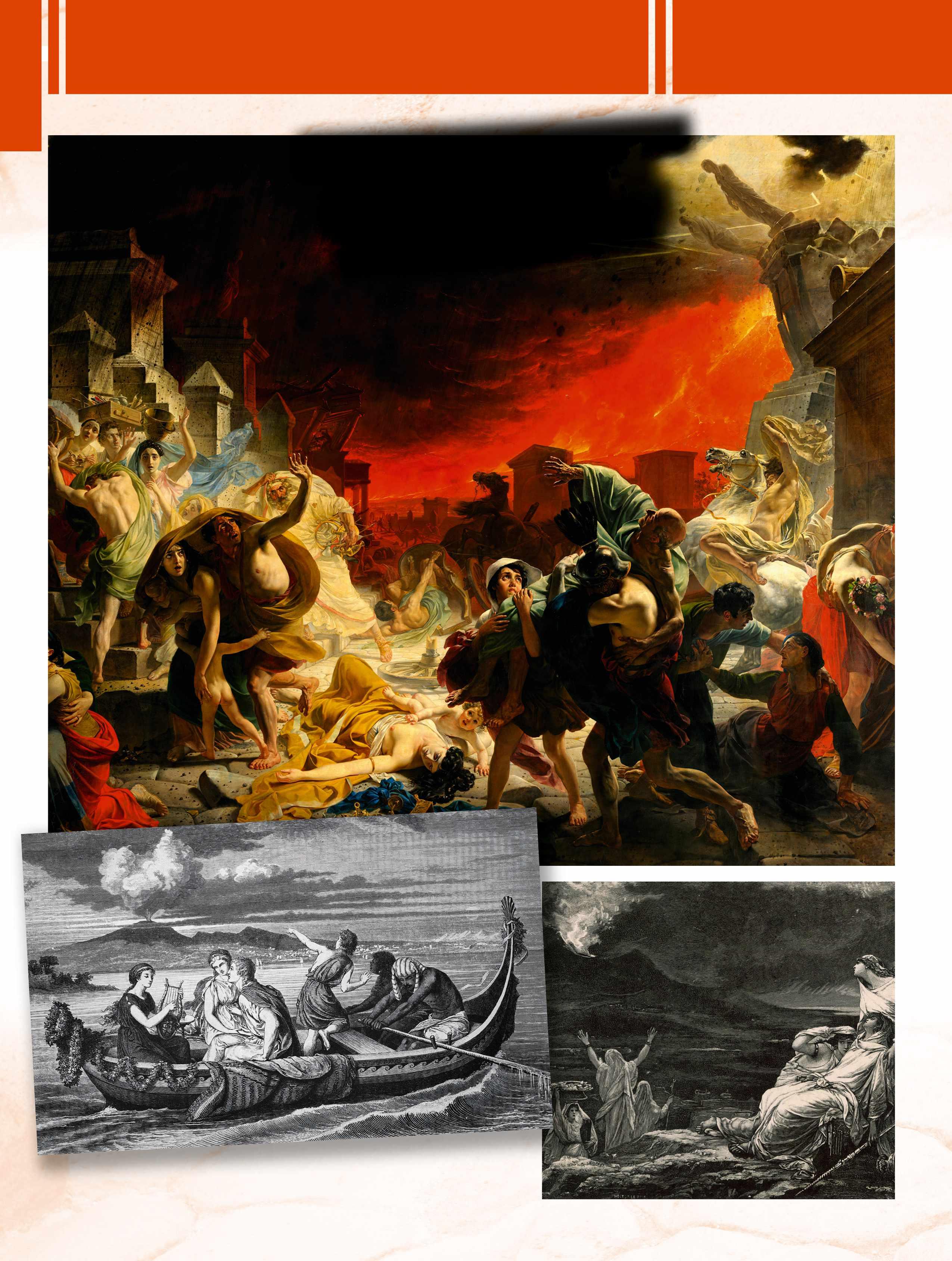
It is estimated that around10,000–15,000 people livedin Pompeii in AD 79. So fararound 1,200 bodies have beenexcavated, and although othersmay still lay undiscovered,it seems as though mostresidents did escapein time.
“ANOTHER PYROCLASTIC SURGE COMPLETELY SUBMERGES THE CITY, TRAPPING IT IN SITU”
After 12 hours of firing its huge plume of debris upwards, the gases inside Vesuvius begin to weaken, to lose their intensity. This is not necessarily good news. This is not the end of the disaster. The volcano still has plenty of its innards to expel. It will just do so less spectacularly now – less spectacular but even more deadly. A series of pyroclastic flows – super-heated clouds of ash, gases and volcanic debris – surge down its slopes, engulfing all in their path.
Having been saved by the prevailing winds that has allowed it to largely avoid the airborne debris of the past 12 hours, the coastal city of Herculaneum, located to the west of Veusuvius, doesn’t manage to escape this time (see box, above right).
At daybreak, with the volume of ash falling on the city now lessening, those Pompeiians who, by fortune or fate, have survived begin to take stock of what’s happened to their neighbourhoods, to their friends, to their families. It’s comparatively quiet now. They believe that the horrific events have dissipated,

that Vesuvius has uttered its last roar. It’s now a grim search for the bodies of the casualties.
On the beach at Stabiae, a port a few miles to the south of Pompeii, a notable casualty will be revealed the following morning. Having sheltered in the town for the first night of the eruption, the body of Pliny the Elder is discovered. One school of thought is that he has died by asphyxiation, caused by inhaling the volcanic ash. But the ashfall is less significant in Stabiae than elsewhere; it may be that he has suffered an asthma attack or cardiac arrest.
The willingness of those surviving Pompeiians to believe that Vesuvius has now fallen silent again proves to be misplaced. The volcano belches out its fourth pyroclastic surge, which charges towards the city at the scarcely believable speed of around 200 miles per hour. Across the Bay of Naples, the teenage Pliny – who will soon abandon Misenum with his mother – is observing from a distance. “It was daylight now elsewhere in the world,” he would later write, “but there the darkness was darker and thicker than any night.”
In among the darkness, he reports “zigzag flashes” and “variously shaped masses of flame”. As the surges power

Mount Vesuvius also destroyed another vibrant community living in its shadow
Despite being situated closer to the crater of Vesuvius, the seaside resort of Herculaneum benefitted from the meteorological conditions of the first day of the eruption. The winds were blowing in a southeasterly direction, which, with the town being located west of the volcano, left it comparatively free of the ashfall. Only a light covering of ash fell on Herculaneum, rather than the heavier debris that brought destruction onto Pompeii, and thus many of its inhabitants were granted safe passage away from danger.
However, come nighttime, the town did not escape Vesuvius’ wrath, with the volcano unleashing the first of several pyroclastic surges. At great speed, this torrent of hot ash poured across the land towards Herculaneum, with the short distance between volcano and town being covered in little more than a single minute. So intense was the heat that any remaining citizens were killed instantly. They, along with Herculaneum itself, were buried in the flow, waiting to be discovered by curious archaeologists more than 1,600 years later.
their way towards the sea, there’s the very likely possibility of a tsunami affecting the local waters. It’s an apocalyptic sight for the despondent teenager. “I derived some poor consolation in my mortal lot from the belief that the whole world was dying with me and I with it.”
None of the residents who remain in Pompeii have any hope of surviving the heat and intensity of the flow, its temperature measuring several hundred degrees centigrade. Another pyroclastic surge soon follows and completely submerges the city, trapping it in situ.
No more will Pompeiians go about their day-to-day business. No more will this city bustle. Its streets, its buildings, its people will now sleep forever. d
Sitting less than six miles from the vast volcano whose rich, fertile soil nourished the crops that sustained its population but which would ultimately destroy it in AD 79, Pompeii boasted all the amenities one might expect of a thriving Roman city.
Fast food restaurants known as popinae or cauponae offered hot food and drinks that could be consumed on the spot – from snails to chicken – while
public baths, complete with latrines and heated water, offered relaxation and a communal place to socialise and catch up on the latest news. Elsewhere, brothels or lupanars catered to the needs of citizens and travellers alike, while hundreds of gods and goddesses could be worshipped and placated at Pompeii’s many shrines and temples.
Use our illustrated map below to take a virtual tour of ancient Pompeii before tragedy struck...

Looming over Pompeii and nearby towns such as Herculaneum, Mount Vesuvius had lain dormant for many generations before the eruption of AD 79. It is likely that residents didn’t even realise it was a volcano.
In 2015, CT scans of skeletal remains from Pompeii revealed evidence of near-perfect teeth. The victims’ excellent dental health was, in part, down to the high levels of fluorine in the local water supply – a by-product of volcanic activity.
Sitting in the heart of the city, the sanctuary was devoted to Apollo, god of poetry, art, archery, plague, sun, light, music and knowledge, and the main divinity of early Pompeii.
The Forum was the focal point for city administration and justice, as well as trade and religious activity.
With separate entrances for men and women, the larger men’s quarters boasted a dressing room, frigidarium (cold baths), caldarium (hot baths) and tepidarium (warm baths).
Bread of different shapes was sold in the city bakeries, often baked on the premises in a large central oven. The lack of serving counter in this particular bakery could indicate that the bread was baked to order, or sold by street vendors. BROTHEL
This two-storey brothel, or lupanar, had five ground-floor rooms, all containing a built-in bed, while erotic paintings gave customers some sense of inspiration.
Built in the mid-second century BC, the theatre was used for performances of Greco-Roman comedies and tragedies. A velarium (awning) could be stretched over the spectator areas to shield them from the Sun.
Initially used as a foyer in which theatregoers could gather during intervals, this area became a barracks for gladiators after the earthquake of AD 62 or AD 63.
One estimate for the number of people who died as a result of the AD 79 eruption
The number of loaves of carbonised bread found in one of the city’s bakeries
The depth, in feet, ofthe ash that fell onmany areas of the cityduring the eruption
This elite dwelling had extensive gardens, boasting artificial waterways, waterfalls and fountains. Decimus Octavius Quartio – a prominent and rich Pompeii citizen – was its last-known owner.
Built around 70 BC, Pompeii’s amphitheatre was, in AD 59, the site of a bloody riot between spectators from Pompeii and nearby Nuceria.
500
The eruption is estimated to have been 500 times more powerful than the atomic bombings of Hiroshima and Nagasaki in 1945
The year Vesuvius lasterupted: 26 people werekilled and nearly 12,000people were displaced
The number of people who could fit inside Pompeii’s huge amphitheatre

Pompeii is a place with two histories. The first, the story of a bustling city, ended abruptly in AD 79 when the eruption of Vesuvius buried Pompeii in pumice and ash, and those who didn’t flee were overwhelmed by a pyroclastic surge.

The second of the two histories began in 1748, when Spanish military engineer Roque Joaquín de Alcubierre (1702–80) first dug at a site known locally as La Cività – the town – a name suggesting a lingering folk memory of what lay
Charles VII of Naples, seen here observing a dig, was keen to keep some of the newly discovered treasures for himself
beneath. Although part of the site had accidentally been unearthed during building work in the late 16th century, it wasn’t until de Alcubierre’s excavations that the true significance of the area became clear. Over the next few years, Pompeii started to give up its secrets, and its status as an archaeological marvel was secured. This was the Pompeii that would later become a staple of films and TV documentaries; a UNESCO World Heritage Site also encompassing Herculaneum and Torre Annunziata.
As to why de Alcubierre was prospecting, it was at the behest of King Charles VII of Naples (later Charles III of Spain). In 1738, the same year he began work on a palace at Portici, Charles employed de Alcubierre to excavate at nearby Herculaneum, another settlement overwhelmed by the eruption of Vesuvius. Many of the objects that de Alcubierre recovered as he tunnelled through – wall paintings, life-size statues in bronze and marble, and even scrolls –were destined for the palace.
But this wasn’t archaeology as we understand it today. The idea of systematically excavating a site in order to document it had still to be formalised. While Charles was genuinely fascinated by the ancient world, he was also a collector – a privileged treasure hunter with ample means to indulge his passion.
The early digs at Pompeii were thought to be disappointing, but from 1755, when excavations at a large property later dubbed the House of Julia Felix started,
LEFT: A bronze statue of a runner, discovered in a house in nearby Herculaneum

Pompeii’s eventual rediscovery led it to become one of the world’s greatest archaeological marvels – and a site visited by millions
The first recorded plaster castmade at Pompeii was not of ahuman body, but of a door. In 1856,the site’s director of excavations,Domenico Spinelli, wrote a letterin which he stated that a casthad been made of the itemusing the impression ithad left in the ash.
this perception changed. Showing a marked reluctance to share and, to be fair, likely worried about looting, Charles tried to keep the work at Pompeii secret. He banned the export of antiquities.
These attempts at distraction were largely in vain, in part because Charles himself commissioned the private publication of Le Antichità di Ercolano Esposte (Antiquities of Herculaneum Exposed), which between 1757 and 1792 built into an eight-volume collection of engravings of finds at Pompeii, Herculaneum and nearby Stabiae. While the books, whose publication was overseen by the newly formed Accademia Ercolanese (Herculaneum Academy), were given in limited numbers to select recipients, their influence was huge.

A source of information and inspiration to designers, architects, artists and scholars, the books contributed to the rise of neoclassicism, a cultural movement rooted in the rediscovery of the ancient world. Increasingly, too, people visited Pompeii. It became an essential stop on the Grand Tour, the cultural jaunt around Europe often undertaken by upper-class young men – especially the British.
If this suggests that people were taking an increasingly scholarly approach to the ruins, that’s true. But it’s also true that the eerie presence of the dead has long been part of Pompeii’s appeal. During the 18th and 19th centuries, the ‘discovery’ of skeletons sometimes conveniently accompanied visits by VIPs while, as Professor Mary Beard recounts in her 2008 book Pompeii: The Life of a Roman Town, a popular exhibit in the local museum was for several years the imprint of a woman’s breast, outlined in the ash. But it was the technique of creating plaster casts, or calchi, first perfected by archaeologist Giuseppe Fiorelli (1823–96), that arguably did more than anything else to create our abiding fascination with Pompeii. Fiorelli realised that, as organic matter broke down, the imprints of people were left in cavities, which could be filled with plaster to produce a three-dimensional image of the unfortunate soul. All too

MAIN: Giuseppe Fiorelli’s evocative plaster casts of victims triggered a resurgence of interest in Pompeii during the 19th century
INSET: A view of the House of Epidius Rufus in 1948. The structure had to be partially rebuilt after being damaged by Allied bombs during WWII
often, we can see how their deaths would have been agonising.
h
The creation of the casts hints at more sensationalism, yet Fiorelli was a pioneer who established techniques for meticulously studying archaeological sites layer by layer. This reflects not only how archaeology at Pompeii was becoming more professional (in the 18th century, people working under de Alcubierre had criticised their colleague’s treasurehunting), but how researchers were developing new techniques at the site.
Even in the 20th century, though, there were setbacks. Astonishingly, in August and September 1943, the Allies bombed Pompeii as they sought to force German troops to retreat. Several parts of the city had to be rebuilt and the museum was hit.
More recently, another calamity occurred in 2010, when the Schola Armaturarum, the gladiator barracks, collapsed. “We should all feel shame for what happened,” said Italy’s president, Giorgio Napolitano. The Grande Progetto Pompei, or Great Pompeii Project, set aside €105m to fund preservation efforts.
An area causing particular concern lay within the northeastern part of
ABOVE: The site of a villa in Civita Giuliana, where tunnels dug by looters have also been found
MAIN: The remains of horses were discovered in the villa’s stables

Pompeii and Herculaneum were not the only Roman towns whose fates were drastically altered by volcanic activity
During the first century BC, the town of Baiae on the northwest shore of the Bay of Naples started to gain a reputation as a fashionable holiday resort, frequented by members of high society. Emperors such as Nero, Hadrian and Septimius Severus later went on to spend time there, and Caligula is even said to have built a three-mile-long pontoon bridge from the town to the port of Puteoli to disprove a prediction that he had as much chance of becoming emperor as he did of riding a horse across the Gulf of Baiae.
The evidence of Baiae’s rich history is still to be found in the town, yet to get a fuller picture you need to go swimming. This is because bradyseism –the gradual uplift or, as in this case, descent of land caused by volcanic activity – has resulted in the Roman-era lower town disappearing beneath the waves, likely between the third and fifth centuries AD. This is not perhaps surprising, given its location atop the Campi Flegrei supervolcano.
In the 1940s, an Italian pilot named Raimondo Baucher spotted the ghostly remains of the lost settlement beneath the waves and snapped several aerial photographs. Aided by the development of new archaeological techniques, the area has since been extensively explored. It is now protected and patrolled by ‘mer-cops’, but visitors can go on guided scuba diving tours to see the ruins for themselves.
Pompeii. Here, it was the sheer mass of the unexcavated city that was causing problems as material accumulated during the eruption and in subsequent years – including the spoil from earlier archaeological digs – pushed against already excavated structures. To help relieve the pressure, previously unexplored areas of the site are currently being excavated.
There’s still much more that could be revealed. A third of Pompeii, an area of 22 hectares, remains buried, but for now the priority lies more in conserving what has already been found, especially as uncovering the city effectively removes a layer of protection.
That’s not to say new finds aren’t being made. In Civita Giuliana, a suburb located to the northwest of Pompeii, a villa has recently been excavated, yielding evidence of illegal tunnels. A reminder of why it is so essential to prevent such activity came with the discovery of human remains and, in the villa’s stable, three harnessed horses – yet more victims of the fury of Vesuvius. d
ABOVE: A diver inspects an intricate mosaic in what was once Baiae’s lower town
LEFT: The 177-hectare site contains a wealth of statues – even if the marine life sometimes makes it difficult to work out their features

The eruption of Vesuvius in AD 79 caused vast damage – fires were started, rooftops were swept away, columns collapsed. Most of the inhabitants of the town escaped into the surrounding countryside (although we have no idea how many of those died there). They took with them small valuables, such as coins and jewellery, and lamps. Organic materials, like sheets, blankets, clothes, curtains, were mostly destroyed.
In the years and centuries after the eruption, salvagers explored Pompeii, tunnelling through walls and removing valuable objects. The earliest formal excavations in the 18th century were little more than treasure-hunting exercises, which means that records of finds are poor or non-existent. There is also evidence that some finds, such as wall-paintings and pottery, were deliberately destroyed by the excavators because they were not considered to be of high enough quality! All these factors make Pompeii a challenging place to study – much like most other archaeological sites.
The 66-hectare site that visitors see today is not a perfect time capsule, having been damaged and looted over the centuries
It is commonly known that in AD 62 or AD 63, a massive earthquake caused damage in the town. Scholars now agree, however, that this was merely one of a series of earthquakes that shook Pompeii in the years before AD 79 It is clear that some buildings were repaired several times in this period
In fact, Pompeii must have resembled a giant building site, with reconstruction
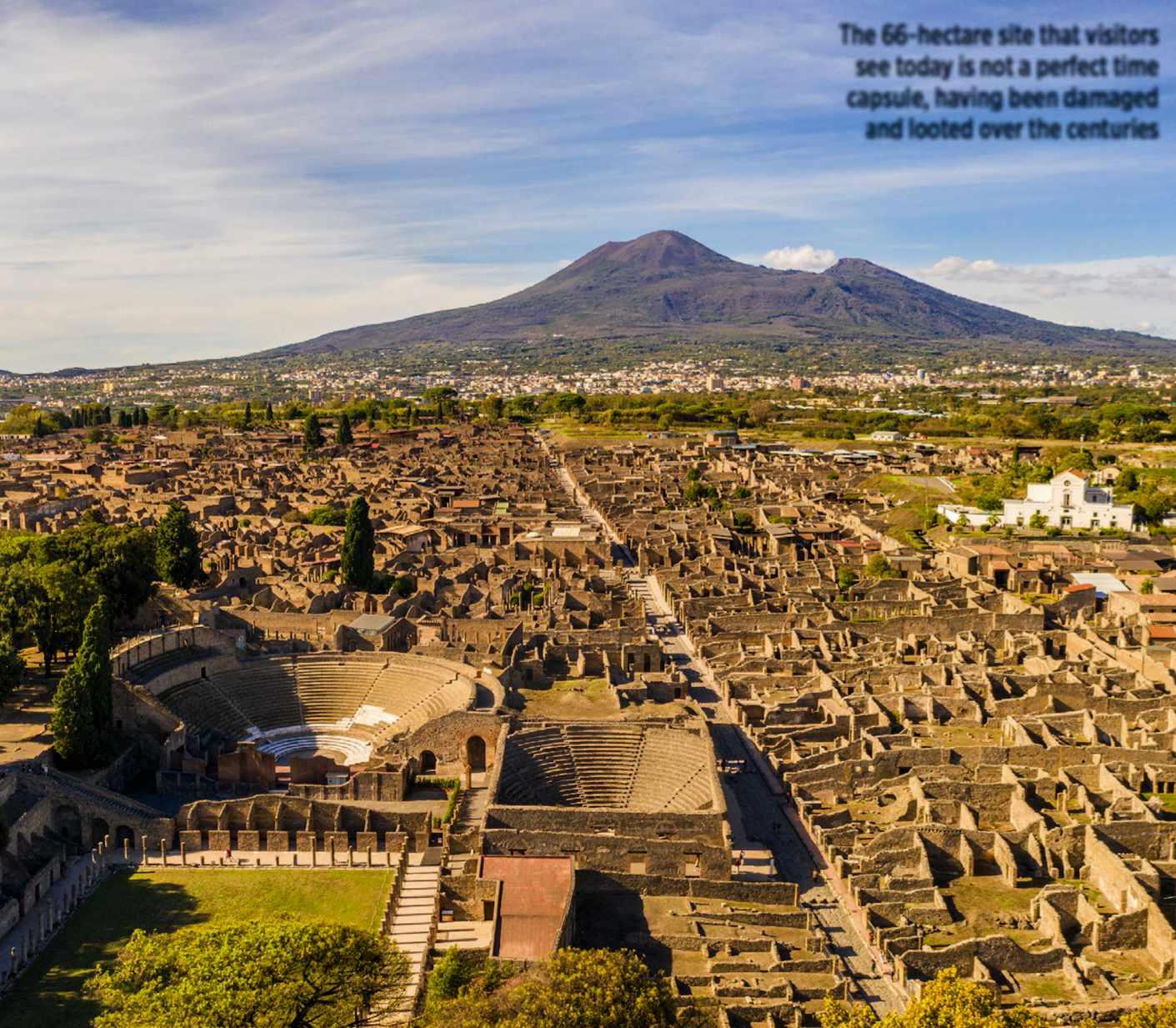
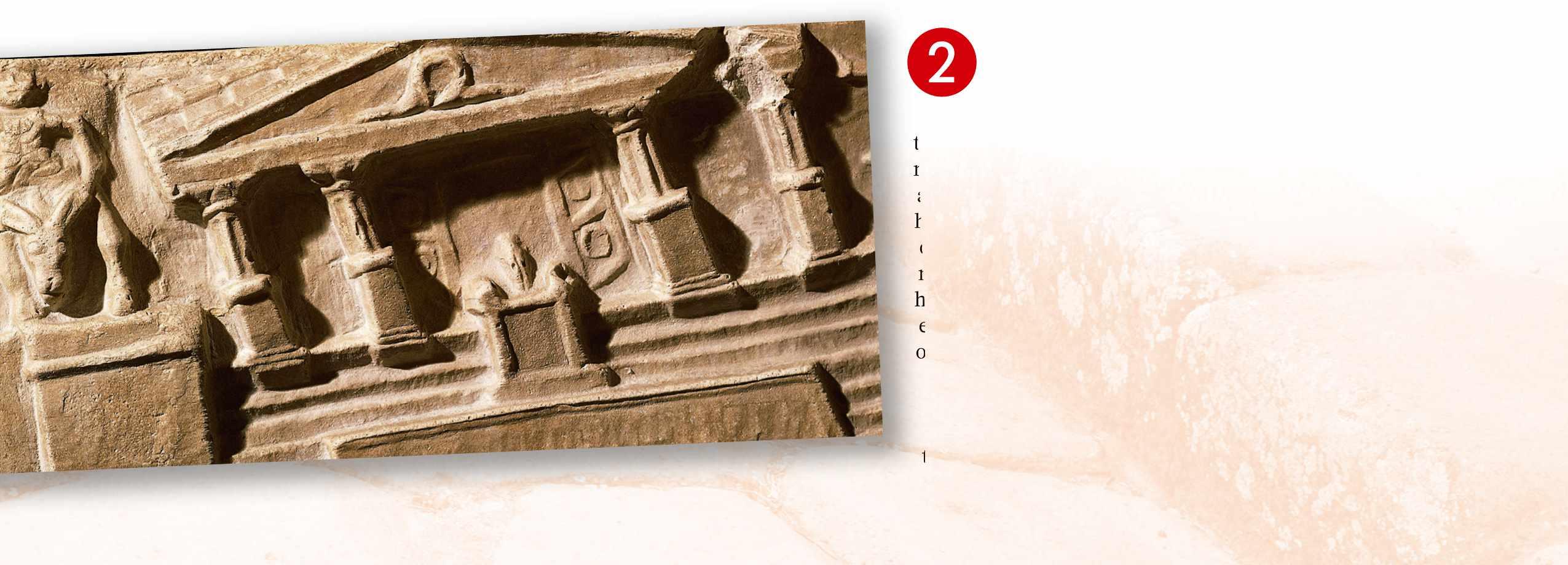
work taking place in both public buildings and private houses. In the past, scholars argued that the town was abandoned by the wealthy in this period and taken over by a mercantile class. These days, we see the scale of rebuilding as a sign of massive investment – possibly sponsored by the emperor –by inhabitants who sought to improve their environment.

What did Pompeiians grow in their gardens? How many brothels really were there? Dr Joanne Berry shares a series of fascinating tidbits about the ancient city and the lives of its inhabitants
LESSER-KNOWN FACTS ABOUT POMPEII
The original frescoes that adorned the amphitheatre (above) have not survived, although an image of a chariot race (right) found inside a Pompeii house still exists
When the amphitheatre was first excavated in 1815, a remarkable series of frescoes (mural paintings) adorned its parapet wall. There were large painted panels of wild animals, such as a bear and a bull facing off, tied together by a length of rope so that neither could escape the other, and a referee standing between two gladiators. On either side of these, smaller panels depicted winged victories, or candelabra-lit spaces.
The frescoes were probably painted on the podium wall in the period immediately before the eruption. Within a few months of their excavation, however, they had been destroyed by frost, leaving no traces of their presence that can be seen today. Luckily for us, drawings were made when they were excavated, so we have some idea of the original colourful decoration of the amphitheatre.
In the mid-18th century, a series of frescoes were found in the atrium of the praedium (estate) of wealthy businesswoman Julia Felix that seem to depict scenes of everyday life in the Forum (the political centre of the city). Twelve fragments of these frescoes survive today: one depicts a beggar being offered something by a woman wearing a green tunic, and another shows a boy being whipped – this has sometimes been considered evidence of the presence of a school in the Forum area.
Other fragments show a cobbler, a man cleaning another man’s shoes, merchants displaying their wares to
In addition to the famous Temple of Isis (dedicated to the Egyptian goddess Isis), images and statuettes of the deity have been found in more than 20 houses, often alongside figurines of more traditional Roman gods and goddesses.
Although Roman writers were suspicious of the Cult of Isis, which they thought threatened traditional Roman values like honour and duty to the state, the Temple of Isis at Pompeii had existed at Pompeii for around 200 years before the eruption of AD 79 – which means that the Cult had a long and established following at Pompeii. Followers of Isis believed that she offered the possibility of life after death, but she was also patron goddess of sailors This surely explains her popularity at Pompeii, which was located by the sea The Cult of Isis attracted women, freedmen and slaves to its ranks, but its rites and ceremonies remain unknown
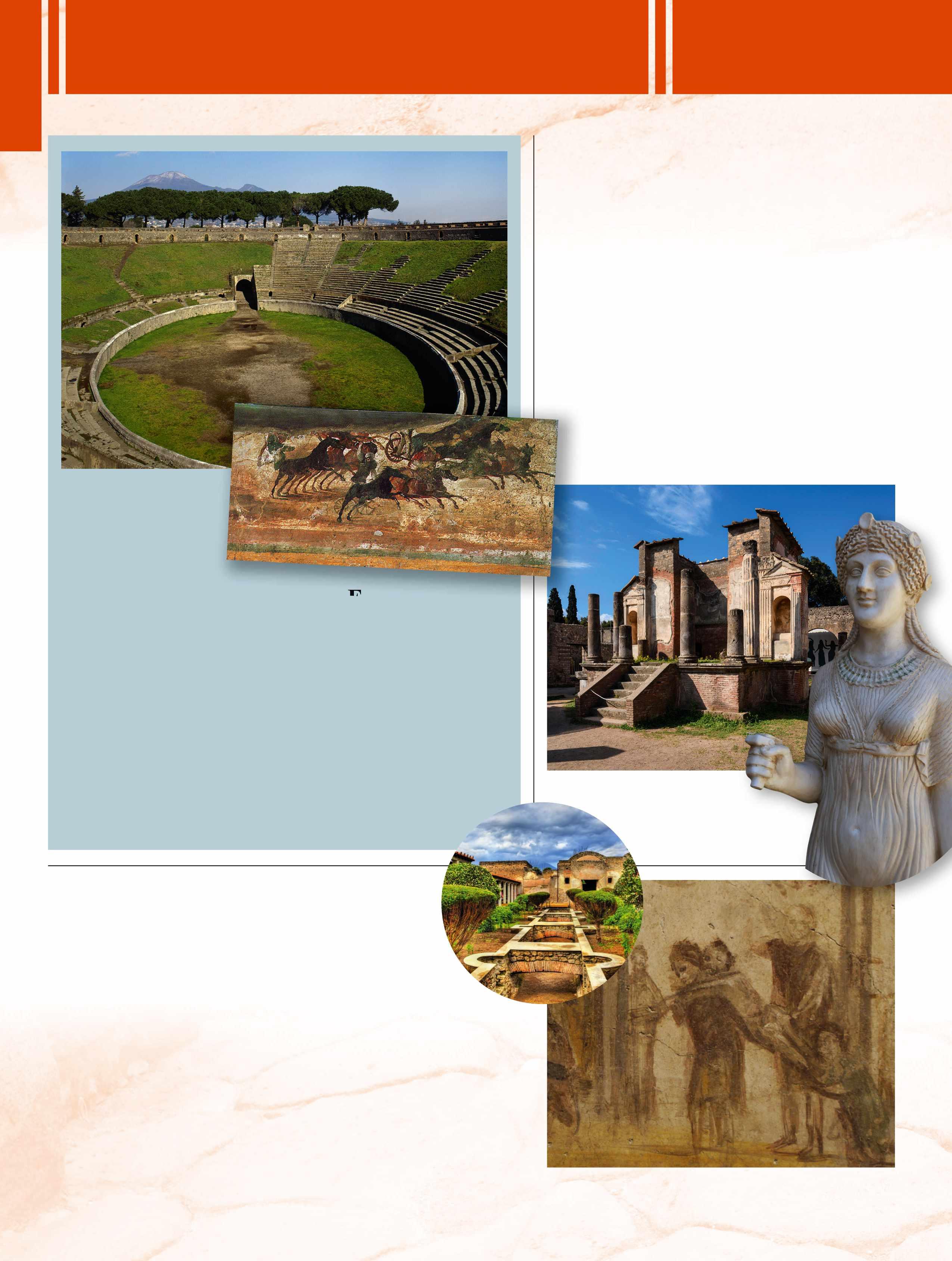
The Temple of Isis (above) was built roughly two centuries before the eruption of AD 79, and adorned by statues like the one shown right
two women, and figures selling bread, fruit, vegetables and what look like socks. In one scene a customer holds the hand of a child. Horses, mules and carts, and possibly a chariot, can be identified in other scenes.
In one important fragment, a banner has been strung from two equestrian statues and four male figures have stopped to read it, or to have it read to them (since we don’t know for sure how many people could read). All these scenes remind us that the Forum was not just the political centre of Pompeii – it was its economic and social heart, too.
The House of Julia Felix (inset) was found to contain numerous frescoes, including one showing a boy being subjected to a brutal whipping (above)
THE AMPHITHEATRE WAS COLOURFULLY DECORATED...
It is located on a narrow, winding street in the centre of the town, and it is today one of the most visited tourist attractions in the excavations. We know it was a brothel, or lupanar, from its layout (it is divided into cubicles, each with a masonry bed), erotic wall paintings and explicit graffiti listing sexual acts and prices.
Scholars have suggested that other ‘brothels’ were located in houses with erotic wall paintings, but in actual fact, erotic paintings were ubiquitous at Pompeii and not associated with the sale of sex. This does not mean that prostitution only took place in the Lupanar, however. Advertisements for prostitutes have been found in the streets of tombs that surround the town, and bars probably sold sex as well as food and wine.
Some people simply scratched their names and the date, just like modern graffiti. Others used this public venue, which housed the city’s law courts, to vent their bile (“Chios, I hope your piles irritate you so they burn like they’ve never burned before!”) or make accusations (“Virgula to her bloke Tertius: you’re a dirty old man!”).
Modern vineyards have been planted
Some messages were started in one hand, but finished in another: a slave called Agatho starts to ask something of the goddess Venus, but his sentence is finished by someone else who writes “I ask that he perish”.
Some of those waiting seem to have resorted to playing games: a remarkable graffito records the names of three men playing trigon, a game that involved players throwing multiple balls at each other. Another man is designated as scorekeeper, and one is tasked with fetching the balls. Clearly the Basilica was a lively spot!
The plaster casts of the victims of the eruption are the most famous artefacts from Pompeii. But did you know that similar casting techniques have been used to study the city’s horticulture?
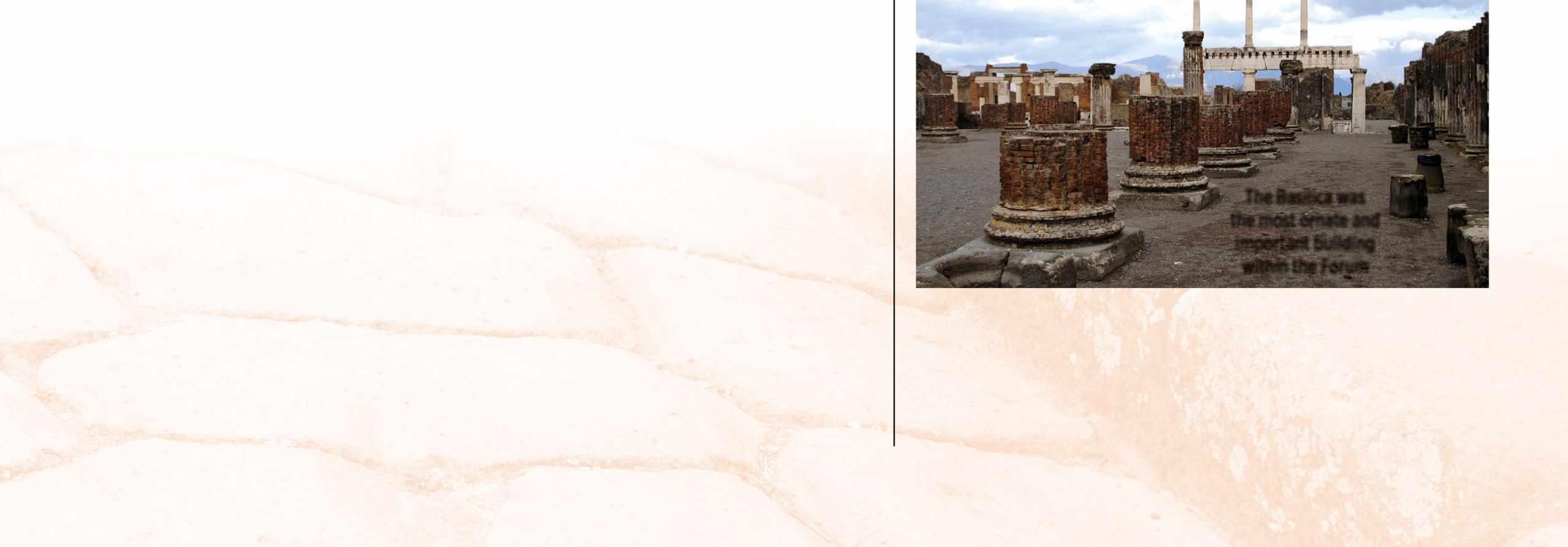
The practice was pioneered by Wilhelmina Jashemski (1910–2007), an American archaeologist who analysed every garden in Pompeii. One large garden was found to be a vineyard – 2,014 of the root cavities were made by vines, with additional cavities created by the

wooden stakes that supported the plants. The site had been divided into four parts by intersecting paths, with trees growing along the paths and at intervals through the vineyard. Other gardens grew vines on a smaller scale, and vegetables and fruit and nut trees were also common. Although some of the produce must have been consumed by the inhabitants of the houses concerned, it seems that much of it was destined for sale at the local markets.
The Basilica was the most ornate and important building within the Forum
THERE IS ONLY ONE
AT POMPEII


ost ancient cities become subsumed, obscured or destroyed by subsequent centuries of building activity, but due to the unique conditions of its preservation – sealed under metres of volcanic material – Pompeii offers us an unparalleled abundance of archaeological evidence for both public and private life in the first century AD.
Initial explorations, conducted through a network of tunnels in the 18th century, plundered Pompeii for treasures without coherent documentation or care for their context. In contrast, modern excavations are almost forensic in detail. The focus has shifted from the aesthetics of Roman art, public monumental buildings and members of elite society to understanding the customs and habits of ordinary Romans.
A vibrant picture of domestic life of the non-elites is being pieced together against the backdrop of their trades and commercial activities, whether it is the manufacture and sale of garum (a type of fermented fish sauce) or the work of tanners and dyers. Even the almost imperceptible traces of enslaved people are now being scrutinised, as well as evidence for the lives of children. On a citywide scale it has become apparent how the rich and poor lived cheek by jowl; there was very little that separated these classes geographically, but much that divided them socially and economically.
It is not just that we are now asking new questions of Pompeii – advances in technology are allowing us to answer far more sophisticated questions. Analyses of food residues from cooking vessels and latrines, for example, are adding to our knowledge of the Roman diet. And while the somewhat ghoulish plaster casts taken of the victims of the eruption continue to fascinate the public, studies of the skeletons also provide important clues about their lives.
The most recent excavations in Pompeii, along the steep limits of the boundary between the exposed and unexcavated part of the site, have reopened an old debate: that of whether to leave untouched the one third of Pompeii that is still buried. With the development of new technology that could tease out even more information, there is much to be said for keeping those unexcavated areas for future archaeologists to explore.
Despite encroaching on this area, the principal aim of the most recent excavations has been to stabilise the gradually eroding escarpment, which has risked collapsing onto the structures below. To prevent another catastrophic destruction of Pompeii, the conservation of the extant buildings is vital if the site is to be safeguarded for further scholarly research, and critically, the enjoyment by future generations of visitors.
Reflecting on his visit to Pompeii in 1787, the German poet Goethe wrote: “There have been many disasters in this world, but few which have given so much delight to posterity”. This is still true today – perhaps more so.
If we’ve whetted your appetite for all things Pompeii, why not explore the topic further with our pick of books, podcasts and TV and radio programmes?
Pompeii: The Life of a Roman Town
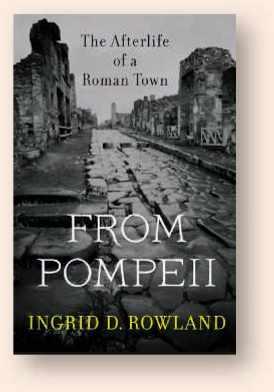
 By Prof Mary Beard (Profile Books, 2008)
By Prof Mary Beard (Profile Books, 2008)
Professor Mary Beard explodes many of the myths that surround Pompeii – from the date of the eruption and the hygiene of the public baths, to the number of brothels and the disaster’s actual death count.

In the Shadow of Vesuvius: A Life of Pliny
 By Dr Daisy Dunn (William Collins, 2019)
By Dr Daisy Dunn (William Collins, 2019)
Dr Daisy Dunn introduces Pliny the Younger, the Vesuvius survivor who became a Roman lawyer, senator, poet, collector of villas, curator of drains, and representative of the emperor.
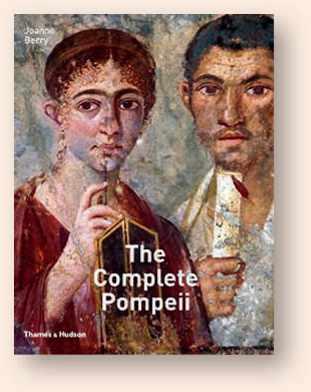 By Dr Joanne Berry (Thames & Hudson, 2007)
By Dr Joanne Berry (Thames & Hudson, 2007)
Explore the rise and fall of Pompeii and all aspects of its existence, including reconstructions of the daily lives of the town’s inhabitants, the dramatic story of its destruction through the words of Roman writers, and the spectacular remains of volcanic debris and damage.
From Pompeii: The Afterlife of a Roman Town
By Dr Ingrid D Rowland (Harvard University Press, 2014)Dr Ingrid D Rowland explores the different experiences of the artists, writers, actors and others who have toured the excavated site of Pompeii through history – from Sigmund Freud to Charles Dickens.
E For podcasts, features, quizzes, interviews and more on Pompeii and Roman life, visit our website: historyextra.com/period/roman
E Natalie Haynes Stands Up for the Classics: Pompeii bbc.co.uk/sounds/play/m001b3vb

Why are ripe pomegranates and some squashed grapes such key archaeological finds from Pompeii? Natalie discusses with Dr Sophie Hay.
Dr Daisy Dunn revisits the eruption of Mount Vesuvius and considers the history that was preserved at Pompeii and Herculaneum. Listen at bit.ly/3wtIV7V
E Pompeii: everything you wanted to know
Dr Sophie Hay answers listener questions and popular internet search queries about Pompeii and the lives of its residents. Listen at bit.ly/3QLInBP



Professor Mary Beard shares her A to Z of the ancient town, complete with yob culture, nightlife and plonk. Read at bit.ly/3zXtxBA
E Inside Science bbc.co.uk/sounds/play/m0017k9s

Discover how scientists managed to sequence the whole genome of an individual killed by the eruption of Vesuvius... and what it revealed.
E Homeschool History: Life in Roman Pompeii bbc.co.uk/sounds/play/m000t405
Greg Jenner hosts a fun HomeschoolHistorylesson on life in Roman Pompeii: How did they brush their teeth? What was the name of the local pub?
Pompeii: Secrets of the Dead (streaming on My5)
Presented by historian and broadcaster Dr Bettany Hughes, this Channel 5 documentary from 2021 reveals how the victims of the AD 79 eruption were preserved.
Lost Treasures of Rome (streaming on All 4)
Episode one of this Channel 4 series sees archaeologists uncover the stories of people who lived and died in Pompeii, racing against the clock to find clues in the tomb of a freed slave.















Dr Tilar J Mazzeo reveals how Mussolini’s daughter, a German spy, and a banker’s wife risked their lives to expose Axis secrets during World War II –and helped to deliver justice at Nuremberg
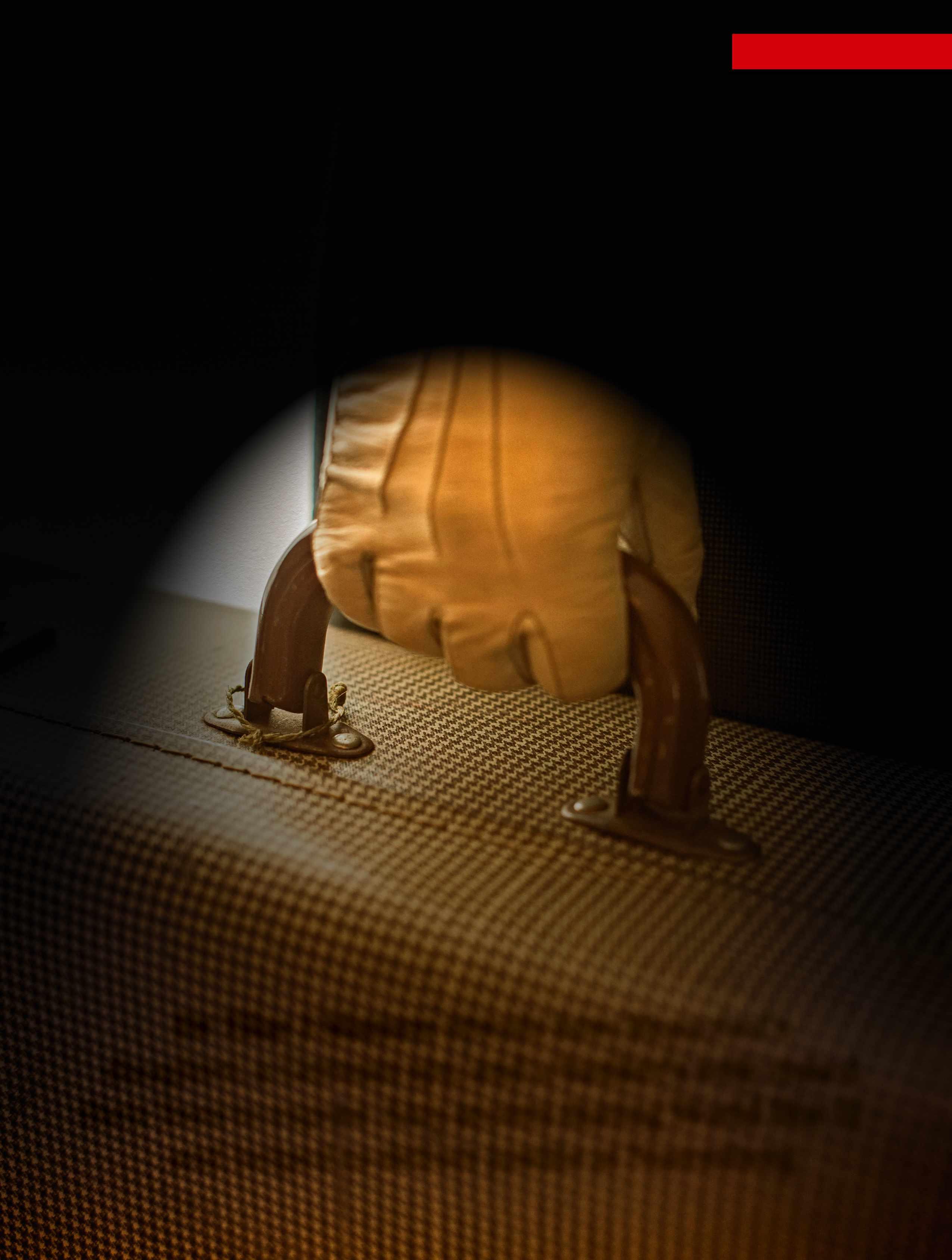
If Edda Ciano were to rescue her husband, she would have to do what no one else dared: she would have to blackmail Adolf Hitler.
“Führer,” she wrote in a letter dated 10 January 1944, “for some time the documents have been in the hands of persons who are authorised to use them in case anything should happen to my husband”. She gave Hitler three days to release Galeazzo Ciano, or she would publish the Italian’s private diaries. It was a gambit as unlikely as it was daring. A young German spy named Hilde Beetz had already been sent to seduce her husband and learn the location of the documents. That spy’s mission had already produced results.

But what Hitler could not know was that in the final months of 1943, the young spy assigned to beguile Galeazzo Ciano in a prison cell had fallen in love with her target and was, even now, helping Edda to deliver her brazen blackmail message.
So, who was Galeazzo Ciano, and why were his diaries of such interest to Hitler? Galeazzo Ciano had been, until the previous summer, Benito Mussolini’s foreign minister and political heir-apparent. Crucially, he was also Mussolini’s son-in-law. Edda Ciano, née Edda Mussolini, was the headstrong favourite child of Il Duce
As Mussolini’s foreign minister, Galeazzo Ciano had been privy to secret conversations between Germany and Italy, and by 1942, became ever more convinced that joining the Axis powers had been a grave mistake. Determined to act, he began secret negotiations with the Allies and sought to remove Italy from the war. When that failed, he reached out to
B E Galea z

ABOVE: Galeazzo and Edda Ciano pictured in 1935. Edda was the daughter of Benito Mussolini, under whom Galeazzo served as foreign minister between 1936 and 1943
RIGHT: Edda in c1929, around the time of her engagement to Galeazzo
ABOVE: German spy Hilde Beetz, pictured here in 1953, was tasked with finding out where Galeazzo Ciano had hidden his diaries
RIGHT: Galeazzo Ciano (centre) pictured at the Berghof, Hitler’s Bavarian chalet, in 1942. In secret, he opposed the war
“She gave Hitler three days to release her husband, or she would publish the diaries”
Allied intelligence, attempting to broker a separate peace.
After that, too, failed, he joined a plot to remove his father-in-law from power in the summer of 1943, and, for a few weeks – until Hitler liberated Mussolini from his mountain-top prison – Ciano and his co-conspirators succeeded.

In the autumn of 1943, Hitler restored Mussolini to power as the head of a puppet state in northern Italy, which came to be known as the Italian Social Republic, or Salò Republic. The Ciano family attempted to flee to South America, but were detained and sent home. Mussolini understood that he was expected to deal with his treacherous son-in-law in a show trial for treason. The verdict was always going to be ‘guilty’.
When the trial began on 8 January 1944, Galeazzo Ciano’s attorney was persuaded to resign, and the public defender was comically incompetent. But it did not matter – the whole affair was nothing more than a charade. When the inevitable verdict was announced two days later, a plea for clemency was sent to Mussolini, and that night he was heard pacing sleeplessly waiting for the appeal. He had already half-decided to commute the sentence for the sake of his daughter, but the request for clemency never reached him. A senior member of Mussolini’s Fascist Party, afraid that the dictator would waver, withheld the letter until Galeazzo Ciano had been executed on the morning of 11 January.
Edda Ciano and Hilde Beetz did not, of course, know of those palace intrigues. All they knew during the trial was that there would only be a narrow window between the verdict and the firing squad. It might be hours; it might be a day or two. And Edda no longer believed that her father would be moved by appeals
Mussolini pictured during his mountain-top rescue by the Nazis in September 1943. The dictator was then installed as head of a puppet state in northern Italy, known as the Salò Republic
Edda’s lover, Emilio Pucci, helped her escape to Switzerland in January 1944. He later became a famous fashion designer

about Nazism and its leaders”. The Gestapo was, even now, hunting for Edda and the missing papers.
Despite Hilde’s feelings for Galeazzo Ciani, Edda was prepared to set emotional complications aside in a bid to save her husband’s life. Aided by Edda’s wartime lover, Emilio Pucci, the two women teamed up and concocted a plan to smuggle Edda and the diaries over the border to neutral Switzerland, where they would make contact with British intelligence.
Before crossing the frontier, Edda wrote the aforementioned letter to Hitler, along with a letter to her father, threatening to publish the diaries unless her husband was released from prison. She handed the blackmail letters (both post-dated to 10 January) to Emilio, so he could pass them to Hilde. Hilde would then see that they reached the two dictators.
On the evening of 9 January, Emilio gave Edda a loaded pistol, warned her to shoot anyone who tried to stop her – and to shoot herself if they captured
her – and watched as she disappeared into the woods with several volumes of her husband’s diaries wrapped around her waist in a belt made of pyjamas. When she arrived at the Swiss side of the border, the impression that she was heavily pregnant prevented her being searched by agents.
Having seen Edda off, Emilio rushed to Verona to deliver her letters, with the intention of returning to the border to flee himself. Instead, he was captured and tortured by the Gestapo.
Hilde, feeling responsible for the debacle, persuaded her supervisor that if she could take Emilio to Switzerland, he would help them ‘trap’ Edda and get the diaries. In reality, of course, they would ensure Edda and the diaries made it safely to Britain.
for mercy. She knew, though, what might move him: the papers.
The ‘Ciano Diaries’ recorded the inner workings of a fascist strategy that he now renounced, along with its ugliest diplomatic secrets. And since at least 1942, the diaries had been seriously aggravating Hitler. “I don’t understand,” Hitler fumed privately, “how Mussolini can make war with a foreign minister who doesn’t want it and who keeps diaries in which he says nasty things
However, as soon as the pair arrived in Switzerland, Emilio collapsed on the street from head trauma, making their incognito operations impossible. He was then hospitalised with a fractured skull and later interned as an Italian prisoner of war. Meanwhile, Edda – a very unwelcome refugee in Switzerland – was incarcerated in a convent, with no access to outside information. She was still in possession of the diaries, and still hunted by the Gestapo.



On 14 January, an Italian diplomat travelled to Edda’s convent, where he informed her that her husband had been executed three days earlier. It was crushing news – a revelation that caused her to howl in grief and fury – but she was still keen to ensure that the diaries were published.
With Hilde now undercover as a German consular secretary in Switzerland, the trio attempted to contact British intelligence to arrange the delivery of the manuscripts, and to negotiate Edda’s passage to safety. Already, there were German plans in the works to kidnap her, obtain the location of the diaries, and ensure her permanent silence.
Frustratingly, though, the British agent on the ground in Bern – perceiving
that Hilde was a German operative and suspecting a set-up aimed at revealing his identity – could not be drawn. Things were looking bleak: Hilde was unable to renew a Swiss visa and about to be deported; Emilio was still recovering from a cracked skull; and it was only a matter of time before Hitler’s henchmen discovered Edda’s location.
Fortunately, the trio had a lucky break. The presence of Edda and Emilio in Switzerland came to the attention of an American government man in Bern named Allen Dulles, whose covert assignment was the operation of the newly founded Office of Strategic Services (OSS), the precursor of the modern Central Intelligence Agency (CIA). The OSS already had some information about the diaries, and was keen to obtain them for the Allies.
Not only might the documents help shape public perceptions about the war, but the Allies were already looking ahead to what would become – after the conflict had ended – the trials at Nuremberg. The race was on.
Allen Dulles’ first thought was to send in a professional intelligence agent, Cordelia Dodson, who had attended university with Emilio, to see if she could obtain the materials. He soon realised, however, that a more expedient route was available: in Fribourg there was a country house, locally known as the ‘House of Spies’, where the American and British intelligence communities socialised, along with a select group of other European agents.
The hostess, an American banker’s wife named Frances de Chollet, was
ABOVE LEFT: American socialite Frances de Chollet formed a close friendship with Edda, and drove her back to her home in Fribourg so that Galeazzo’s diaries could be photographed
ABOVE CENTRE: A typed letter from Allen Dulles to Frances de Chollet, a few days after the night-time drive to Fribourg
ABOVE RIGHT: Edda and Frances continued to exchange letters after the diaries were published, with Edda even giving her “new found friend” a decorated watch
friends with the Italian heiress Virginia Agnelli and her daughters, who were themselves friends of Edda and Emilio. Keen to exploit this connection, Allen Dulles activated Frances as an ‘accidental’ (amateur) agent and tasked her with befriending Edda and persuading her to trust the Americans with her late husband’s papers.
To facilitate the clandestine ‘girls’ lunches’ between the two women, the OSS provided Frances with a sporty race car to cross the mountain pass to the psychiatric clinic where Edda was now living in secret. It was fortunate that they did – and that Frances was an excellent and experienced race car driver. Because, when Edda ultimately did agree to allow the OSS to photograph the papers, the equipment blew the fuses inside the building.
Fearing that the clinic would discover what was happening – and that Edda would be sent back to Italy, and her certain death – it was decided that Frances would drive Edda and the diaries across the mountains to photograph the diaries on Frances’ kitchen table. The plan worked: the intelligence team photographed the diaries, page by page, into the early morning hours. Then, just before dawn, Frances drove Edda back to the clinic at high speed and helped her sneak back in through a window.
What began as an amateur spy mission ended up in a bond that would last after the war ended. Later, Edda would fondly recall “that little trip”, especially how the two women dodged the Gestapo and delivered – at last –the major portion of Galeazzo Ciano’s diaries to the Allies for publication, just as Edda had warned Hitler.

On 27 May 1945, Allen Dulles held the papers in his hands; the papers that three women – Edda Ciano, Hilde Beetz and Frances de Chollet – had each risked their lives to preserve, and that bound them in a curious wartime friendship. Together, the papers were, in the words of the US government, “the most important single political document concerning recent Italian affairs in existence”.
In front of Dulles was Robert H Jackson, the US chief counsel and head prosecutor at the trials that would come to be known simply as Nuremberg, after their location. The charges were crimes against the peace, conspiracy, war crimes and crimes against humanity. The diaries of Galeazzo Ciano were among the most important pieces of evidence against members of Hitler’s innermost circle.
Whatever small measure of justice Nuremberg amounted to, set against the sweeping depravity of World War II, these women – in what must rank as one of the war’s greatest rescue missions – helped to deliver one part of it to history. d
DR TILAR J MAZZEO is a bestselling author and an associate professor at the Université de Montréal. The story of the diaries is explored in her new book, Sisters in Resistance: How a German Spy, a Banker’s Wife, and Mussolini’s Daughter Outwitted the Nazis (Scribe, 2022)
An episode of BBC Radio 4’s Great Lives, examines Benito Mussolini’s legacy

Not for nothing is 17th-century Dutch artist Johannes Vermeer known as the ‘master of light’; the effect of daylight casting light and shade on the subjects of this remarkable painting gives the work an almost photographic quality: there’s no doubt it was a piece designed to impress.

“The Art of Painting is a very special work and one that Vermeer held onto until his death,” comments Dr Sabine Pénot, curator of Netherlandish and Dutch paintings at the Kunsthistorisches Museum (KHM) in Vienna, where the painting hangs today. “Demonstrating his ability to create perfect illusionism without slavishly copying the visible world, this was Vermeer’s showpiece: a painting designed to showcase his incredible skill and talent as an artist to potential patrons.”
“Interpretations of the painting have changed a great deal over time,” continues Pénot. “In the 19th century it was viewed as a genre painting – a form of art depicting scenes of everyday life. But it has also been interpreted as a history painting, with emphasis placed on a map of the Netherlands, which dates to 1636, as well the double-headed eagle on the hanging chandelier – the imperial symbol of the Habsburg dynasty that once controlled the Seventeen Provinces of the Netherlands. The model the artist is drawing is believed to represent Clio, the classical muse of history.”
There is little doubt that The Art of Painting meant a great deal to Vermeer, and he never sold it, even when his fortunes deteriorated drastically towards the end of his life. Even after his death, his widow, Catharina, passed the work on to her mother in a bid to keep it out of the hands of creditors.
The allegorical work invites the viewer to peek inside an imaginary studio by way of a thick tapestry that has been pulled to one side like a curtain; within the room itself, we can see that the artist has begun to paint the model’s crown of laurels, but
the canvas on which he works appears to be too small on which to paint the entire figure of the model.
The artist himself is disproportionately large in scale, perhaps emphasising his importance in the work. His elaborate, expensive clothes – black pantaloons, slashed doublet and beret – mark him as an educated man of standing and says much about Vermeer’s personal ambition and his desire to move beyond his lowermiddle-class upbringing and into the intellectual, creative and spiritual role that he believed artists occupied.
“The comparison of the arts – from sculpture to poetry – was a topic of great debate at this time, and Vermeer was likely addressing these rivalries through his representation of the artist at work,” comments Pénot.
Despite being celebrated in Delft and The Hague during his lifetime, Vermeer fell into relative obscurity after his death. Indeed, until the 1860s, The Art of Painting was believed to have been the work of Vermeer’s contemporary, Pieter de Hooch, whose name was added in the 18th century, and which can still be seen via infrared reflectography along the lower cross support of the artist’s stool. Vermeer’s signature – ‘I.Ver-Meer’ – appears faintly to the right of Clio’s shoulder.
The painting was originally brought to Vienna by Baron Gerard van Swieten in the 18th century, and it later ended up in the hands of Adolf Hitler, who purchased it from Count Jaromir Czernin in 1940. In 1943/44, it was transferred to the salt mines in Altaussee where, alongside thousands of other works in the Nazis’ possession, it remained until its retrieval by US forces in 1945 and eventual move to the KHM. d
WORDS: CHARLOTTE HODGMANThe shiny bronze chandelier is surmounted by a double-headed eagle, the imperial symbol of the Habsburgs.

The vertical crease in the map roughly reflects the location of the political division between the Northern and Southern Netherlands (west is at the top), finalised at the Treaty of Münster in 1648.
Despite being granted a peek into his studio, little can be learned about the artist’s painting process; no painting tools other than a brush are visible.
The mask on the table has generally been interpreted as a studio prop and is most likely a plaster cast – a painter or sculptor’s model.
TheArtofPaintinghangs
Room XII at the Kunsthistorisches Museum in Vienna, Austria.
information
khm.at/en
It is believed that the thin folio hanging over the edge of the table is an architectural drawing folio or a music manuscript.
Executed with photorealistic finesse, this 17th-century work demonstrates why its artist is known as the ‘master of light’

Two years after their last collaboration, digital artist Marina Amaral and historian Dan Jones have joined forces once again, this time bringing together a range of colourised images that explore women’s lives between 1850-1960

In 2017–18, when we were working on our first book together, The Colour of Time, we found ourselves repeating what would become a familiar lament: there aren’t enough women in here. No matter how much we willed the photographic archives to offer us an equal balance of men and women, all too often we would find ourselves surrounded by dudes with bushy beards. That is why we decided that, in our third book, we would set ourselves a challenge: no dudes; no beards; no men allowed.
The resulting book recounts a history of humanity between 1850 and 1960, told through women’s pictures – a selection of which are shown over the following pages – lives and experiences. Many of the women featured fought for equality, freedom and opportunity during an age where women’s rights were curtailed and suppressed, but this is not a work that focuses solely on social justice or injustice. The women we have chosen feature because their stories are interesting and (in most cases) admirable. It is a celebration of their existence and a platform to highlight their stories.
MARINA AMARAL and DAN JONES
Italian educator Maria Montessori opened her first school in a slum district in Rome in 1907, but it was to be no traditional establishment. An advocate for learning through play and self-guided exploration – a philosophy known as the ‘Montessori Method’ – her ideas quickly became popular across Europe and the US, but came under fire from educational psychologists of the 1920s and 1930s and fascist crackdowns on nonconformist institutions. Despite their forced closure, some Montessori schools did survive: here, pupils at a school in Smithfield, London, in c1951, show Montessori the fruits of their hard work. The educator died a year after this photograph was taken and never witnessed the resurgence in popularity of her ideas that followed shortly after.

G In 1939, American singer, dancer and civil rights activist Josephine Baker swapped the stages of Paris for a far less public, but altogether more dangerous, role as a WWII spy, gathering information for French military intelligence. Photographed here in her French women’s air auxiliary uniform, Baker used her fame as cover for her covert activities; she was later awarded the Legion of Honour, France’s highest order of merit.

G
“I see immense advantages in being gagged. It silences me but it makes millions of others talk about me and the cause in which I live”. So wrote Margaret Sanger in 1929 – the year in which this photograph, which shows her being symbolically silenced, was taken. A trained nurse, Sanger had seen first-hand the suffering that unwanted pregnancies – and illegal abortions – could place on women and campaigned tirelessly for every woman to be “the absolute mistress of her own body”. Sanger’s commitment to the birth control cause saw her silenced, prosecuted and even imprisoned; nevertheless, she lived to see the contraceptive pill made available to women in the 1960s.

E In 1951, shortly after this photograph was taken, US tennis player Althea Gibson became one of the first black women to compete at Wimbledon, kicking off a career that would see her win 11 Grand Slam titles and countless other accolades – all at a time of widespread racial prejudice and segregation.


Masking personal and physical pain behind smiles and waves, Argentina’s first lady celebrates her husband’s re-election for a second term as president. A tireless advocate for women’s rights and poverty relief, the 33-year-old former actor and performer was grievously ill with cervical cancer and only able to stand for the celebration rally with the help of a metal frame hidden beneath her fur coat. She died less than two months later.

One of the most brilliant scientists of the 20th century, Marie Skłodowska-Curie became the first woman to be awarded a Nobel prize, winning one in 1903 for her research into radioactivity. Eight years later she went on to win a second, for chemistry. As a Polish woman living in France, she faced discrimination for her sex, her status as a ‘foreigner’ and for being a suspected Jew. Ultimately, her scientific discoveries would likely be her downfall: she died in 1934, aged 66, probably of radiation poisoning.



G Born Marion Barbara, Carstairs inherited a vast fortune and indulged her passion for speed with a custom-built powerboat which she steered into fifth place at the 30-mile Duke of York’s Trophy on the River Thames in 1925. In the 1926 competition she wore the victor’s rosette, before going on to win four more races in the same season. Going by the name of ‘Joe’, Carstairs was known for her flannel lounge suits, made by a men’s tailor on Savile Row, and had highprofile affairs with several women, including Marlene Dietrich and Greta Garbo.

F As a female entrepreneur in male-dominated corporate America, Elizabeth Arden was something of an anomaly. Having opened her first beauty salon in 1910, her beauty products were on sale in Europe by 1920 and the company continued to go from strength to strength. Her passion for affordable cosmetics was matched by her love of horse racing – here, she is shown talking to the Queen’s racehorse trainer Cecil Boyd-Rochfort (left) at the Newmarket Horse Sales.

H A travel writer and adventurer, Forbes was willing to do anything in order to travel to places usually forbidden to westerners – from faking passports to hiding revolvers beneath her traditional Arab dress. In the winter of 1920–21, she became the first non-Muslim woman to visit the then Ottomancontrolled Kufra Oasis, in Libya. d
WORDS: CHARLOTTE HODGMAN
READ
AWoman’sWorld,1850–1960, by Marina Amaral and Dan Jones, is available now, published by Head of Zeus
impact of the 17th-century blaze, and why its legacy as a ‘plague killer’ should be extinguished

When fire shot through the City of London over the course of three days in early September 1666, razing everything in its path, the future of England’s capital – its very existence –was in jeopardy. Although the estimated death toll remained remarkably low for a fire that wreaked such destruction, the City itself looked much different when the final smouldering was extinguished. More than 13,000 houses had been destroyed, along with nearly 90 churches. Some significant buildings were lost to the flames, including the original St Paul’s Cathedral and the Royal Exchange, as well as the city gates at Aldersgate, Ludgate and Newgate.
The subsequent history of England would have taken a very different complexion had its entire capital been lost. As it was, the flames were largely

From Sunday 2 to Wednesday 5 September 1666, the City of London was overwhelmed by the largest, fastest-moving fire it had ever experienced, one that razed most of the buildings within its walls to the ground. Having broken out in a bakery just after 12am, the fire spread swiftly through the night. Not that there wasn’t a chance to contain its reach early on by demolishing buildings ahead of its path to create firebreaks. But the Lord Mayor dallied over authorising such measures and the fire took serious hold. Fanned by easterly winds, it roared largely unchallenged across the entire City. The flames only dissipated when the wind dropped nearly 72 hours after its outbreak. It was “the saddest sight of desolation that I ever saw,” recorded Samuel Pepys.
limited to the City of London. A few historians have even suggested that, in some regards, the Great Fire turned out to be a force for good. The principal tenet of this line of thinking revolves around the Great Plague. The belief is that, when fire broke out, the epidemic – which had ripped so easily through the cheek-by-jowl living quarters of the City the previous year – would have found it much harder be transmitted; in short, that the fire killed off the epidemic, certainly in London.
Dr Clare Jackson – senior tutor at Trinity Hall, Cambridge and author of the award-winning Devil-Land: England Under Siege, 1588–1688 (Allen Lane, 2021) – dismisses this theory. “This is a myth. The Great Fire had not spread to areas that had experienced particularly high levels of plague infection, such
as Southwark, Clerkenwell and Whitechapel.” That is, the flames failed to reach certain districts, so couldn’t have had an impact on plague numbers.
Plus, the timeline of the epidemic doesn’t neatly tally with the timeline of the Great Fire, as Dr Jackson explains: “Plague mortality had already started to decline from late 1665, while people also continued to die from plague after the Fire. Popular associations between the Great Plague of 1665 and the Fire of 1666 arise only from their close chronological proximity.”

Understandably, the Great Fire caused mass migration from the City of London to surrounding areas. But this alone didn’t reshape the city, especially as much of this migration was only shortterm as the homeless sought temporary shelter in the open land beyond the city limits, particularly to the north. By then, London was already swiftly expanding and swelling. “Before the Fire, there had already been significant expansion westwards, with local populations moving beyond the City’s walls to escape overcrowding. Newly fashionable areas such as St James, Covent Garden and Westminster were attracting the gentry and upwardly mobile migrants, while poorer families were tending to move eastwards.”
Rather than licking its wounds, the City of London very swiftly set about rebuilding itself. The economy obviously took an immediate knock, but it wasn’t as catastrophic a hit as might have been expected. “While there was inevitable short-term disruption to trade,” explains Dr Jackson, “the speed with which the authorities embarked on rapid rebuilding and recovery was remarkable. Two sets of plans for the City’s rebuilding had already been submitted to Charles II’s government by 13 September 1666, only a week after the Fire ended By 1670, around 6,000 houses had been rebuilt
One legacy of the Great Fire was the use of less flammable materials in building; the Rebuilding Act of 1667
specified that “all the outsides of all buildings in and about the said City be henceforth made of brick or stone”.

However, as Dr Jackson clarifies, the events of 1666 can’t take complete credit, pointing out that, during the early 1600s, James VI and I had made similar restrictions on the use of materials in construction in London, “both to reduce fire risk and to reserve timber for England’s Navy ships. Such orders had, however, often been disregarded, but the Fire of 1666 provided an opportunity for widespread enforcement, as City authorities were given the right to demolish illegally built houses.”
One of the grandest rebuilds was, of course, the magnificent Sir Christopher Wren-designed St Paul’s Cathedral, which still dominates the London skyline as viewed looking northwards from the South Bank of the Thames. That’s an undisputed visual reminder of the Fire.
ABOVE: A coloured engraving shows the conflagration from London’s South Bank

INSET LEFT: The new incarnation of St Paul’s Cathedral, pictured under construction
INSET RIGHT: Great Plague victims lying in a street. Contrary to popular belief, the Fire didn’t kill the epidemic
Thomas Farriner’s bakehouse
– where the Great Fire of Londonbegan – was not located onPudding Lane, as traditionallybelieved. Hearth tax recordsshow it was actually sited onFish Yard, a small enclaveoff Pudding Lane.
One last potential legacy of 1666 concerns how prepared London was for
subsequent outbreaks of fires. Within a few years, the large-scale adoption of fire insurance became standard practice, but the idea that a new emergency service was immediately created is again debunked by Dr Jackson. “There were a few new fire pumps, but the first city-wide fire service was not created until January 1833.” Perhaps it should have come into force earlier. In 1676, 600 houses in Southwark were lost to a blaze, and a further 1,000 in Wapping six years after that.
In conclusion, although it accelerated certain developments that were already afoot, had the Great Fire
not happened, the course of English history wouldn’t have been terribly affected. However, if the wind hadn’t dropped three days into the fire and the flames had continued to consume all before them, the events of September 1666 could have left the country without a capital city. d
Dr Clare Jackson discusses the insecurities and anxieties of the Stuart age in an episode of the HistoryExtra podcast: bit.ly/JacksonPod112

“RATHER THAN LICKING ITS WOUNDS, THE CITY OF LONDON VERY SWIFTLY SET ABOUT REBUILDING ITSELF”
What if... Garibaldi had failed to unite Italy?
This is your big chance to have your say about everything in BBC History Revealed.

Every two years, we carry out research on behalf of BBC Studios that invites readers to share their views about this magazine and other BBC Studios titles.
This essential research is used by BBC Studios and the editors to shape future content and strategy for the magazines. We would really appreciate your time to help us with this research.
To take part in the research and be entered into a prize draw to win a £250 Amazon voucher, please visit: bbcstudios.com/survey
The survey will take less than 10 minutes and is being conducted according to Market Research Society guidelines. All of your responses are confidential.
Terms and conditions: The prize is one £250 Amazon voucher. One winner will be drawn at random after the closing date at 23:59 on 31 December 2022. Open to all residents of the UK and the Channel Islands aged 18 years or over except employees of BBC Studios or the BBC, their contractors, members of their families and anyone connected with this prize draw. Only one entry permitted per person. There is no cash alternative and the prize is not transferable. No purchase necessary. The prize draw is subject to the laws of England and Wales. Promoter: BBC Studios Limited, Television Centre, 101 Wood Lane, London W12 7FA. Your data will be used for the purposes of administration of this prize draw and in accordance with BBC Studios’s Privacy Policy (www.bbcstudios.com/privacy). Where consent has been provided, BBC Studios may send email marketing messages from which you may unsubscribe at any time.
The late Marcel Marceau (main) pictured performing in New York. The mime artist was inspired by the likes of Jean-Gaspard Deburau, shown playing Pierrot in the 19thcentury image below right

LONG ANSWER “The art of expressing feelings by attitudes and not a means of expressing words through gestures,” was the definition of mime by Marcel Marceau, one of the greatest-ever exponents of the artform. Thanks to mimes like him, and his teacher Étienne Decroux, it is regarded as quintessentially French, and where the look of white face paint, white gloves, stripy T-shirt and black braces comes from.
That was certainly not the style of the original mime artists in ancient Athens. Nor were they performing what is now understood as mime, since they could talk and sing while acting out their scenes. The name ‘mime’ referred to their skills at mimicking people.
The Romans enjoyed this physical theatre, so, in the way the Romans did, they took it and made it their own. It was then during the Renaissance in the 16th century (when

fascination with all things classical was at a high) that ancient mime inspired a new entertainment, commedia dell’arte
Performing troupes took it to France. There, it was taken up with gusto by Jean-Gaspard Deburau, who developed his popular character Pierrot at the Théâtre des Funambules in Paris. He was a seminal inspiration for the French mimes of the 20th century.
A scene depicted on one of the historic Stora Hammars stones, located in Sweden, shows a purported blood eagle sacrifice

LONG ANSWER In terms of works that can definitively be said to have been written by a woman, look no further than Revelations of Divine Love.
Precious little is known about the author, Julian of Norwich, but her literary legacy remains.

LONG ANSWER Reader beware: this one is graphic. Even allowing for the Viking reputation for bloodlust, this ritual or sacrifice of theirs was especially grisly. The blood eagle started with laying the victim on their front before cutting the ribs away from the spine using a sharp tool. The lungs were then pulled through the openings and laid on either side of the body to create ‘wings’. Voila, the blood eagle.
It is mentioned a couple of times in Old Norse poems – supposedly, it




QUITE THE COVER-UP Sun-seekers enjoy a dip at Southsea, Hampshire, c1900 (above). Bathing machines enabled swimmers to step directly into the water, as shown right
The number of major dynasties that ruled China, from the legendary Xia in c2070 BC to the Qing, which ended in 1912.
was done to Halfdan Long-Leg and Aella of Northumbria during the ninth century – and still occasionally appears in pop culture, from the 2019 horror film Midsommar to the video game Assassin’s Creed: Valhalla
But the question of whether it was actually performed has long been debated. No physical evidence has been found, although a study published in 2022 did confirm it was anatomically possible. Let’s not dwell on what that research entailed.
In 1373, she fell gravely ill and, believing she was dying, had visions of the Passion of Christ. She recovered and wrote of her experiences, a deeply intimate reflection full of optimism and faith. “The fullness of joy is to behold God in everything,” it read. Later, while living as an anchoress (a woman who retreated from the world for a life of solitude), she wrote a more detailed exploration, which is still celebrated as a towering theological work.
A statue of Julian can be found at Norwich Cathedral, not far from the church where she lived



The changing rooms on wheels protected Georgian and Victorian modesty at the beach
LONG ANSWER At a time when a bare ankle would be showing a bit too much skin, is it any wonder that the prospect of seeing the opposite sex in a swimsuit was a social no-no? The solution, from the mid-18th century and throughout the strict, propriety-obsessed Victorian era, was the bathing machine. Essentially, it was a wooden hut where would-be swimmers changed in privacy. Admittedly, that doesn’t sound that strange. But then the hut, propped
on large wheels, was pulled into the water to ensure its passenger could exit and submerge with modesty intact. Never mind that British beaches tended to be segregated anyway, or that women wore baggy and billowing swimming costumes that could hardly be described as revealing by modern standards. Etiquette had to be maintained during a day at the seaside.
Men, by the way, didn’t really use bathing machines, despite more reason to need them as they were allowed to bathe in the nude until the 1860s.
Julian of Norwich gave poignant voice to her visions of Christ
In 1930, polar explorer Percy Lemon had to pull out of a British Arctic expedition after being bitten by the pet lemur of the expedition’s sponsor. Lemon was allergic to the iodine he was treated with and took three months to recover.
The 19th-century French inventor Charles Cros suggested using a giant mirror to concentrate the Sun’s rays and burn messages onto the surfaces of Venus and Mars in order to communicate with alien life. The French government refused his petition.


LONG ANSWER The Stechschritt (‘stabbing march’, after the straight legs stabbing the air) has been used in armies all over the world, and still is. Think of the high-stepping Russian guards at the Kremlin or the painfullooking extra-bouncy goose step of the North Koreans. It has no tactical relevance whatsoever –in fact, the impact and pressure on the soldiers’ joints can result in severe damage – but as a display of a military unit at the peak of discipline, moving as one, the goose step can be a powerful psychological weapon.
The march is generally believed to have been instigated by a Prussian general, Prince Leopold I of Anhalt-Dessau, as part of his modernisation of

SHORT ANSWER
test of endurance
The infamous ‘goose step’, demonstrated by the Nazi troops above, can be attributed to Prince Leopold I of Anhalt-Dessau (inset)
the army in the 18th century. Under his command and notoriously harsh discipline, the goose step was introduced to keep the infantry in line, literally. As the Prussians grew into a dominant military machine, the armies of other European nations soon started to think: if it’s good enough for them, why not us?
Its propaganda power was especially understood by Adolf Hitler, and not lost on his enemies. In 1941, the novelist George Orwell wrote: “The goose step... is one of the most horrible sights in the world, far more terrifying than a dive-bomber. It is simply an affirmation of naked power; contained in it, quite consciously and intentionally, is the vision of a boot crashing down on a face.”
Until the American Civil War (1861–65), cricket was the most popular sport in the US. The first international match was hosted in New York in 1844, with the “British Empire’s Canadian Provinces” beating the US by 23 runs.


Operation Overlord, the Allied invasion of Europe in World War II, considered a sixth beach for the D-Day landings, alongside Utah, Omaha, Gold, Juno and Sword. It would have been codenamed Band.
SHORT ANSWER
no exploratory
into the unknown, but a 64-day ad for a casino


LONG ANSWER
From 4 December 1958 to 7 February 1959, American duo Robert Timm and John Wayne Cook lived every minute flying over the deserts of southwest United States. That’s 64 days, 22 hours and 19 minutes. And they did it in nothing more than a modified Cessna 172.
This feat could have been to one-up Jim Heth and Bill Burkhart, who earlier that year set a longest-flight record at over 50 hours, also in a Cessna. But instead it was a publicity stunt concocted by Timm, a slot machine mechanic at the Hacienda casino in Las Vegas, to drum up business.
During the flight, the plane (emblazoned with the word ‘Hacienda’) was refuelled by a truck on the ground, during which food and supplies were pulled up, but, generally, it was a surprisingly smooth flight. Although at one point, the Cessna flew without a pilot for an hour when they both fell asleep.
LONG ANSWER
Historically, a chaperone was a person who accompanied unmarried women at public gatherings to ensure no funny business took place. But chaperon is a French word for ‘hood’, referring to a type of headgear complete with cape that was sported in medieval Europe. It’s not fully clear how the term came to be used to refer to the social-etiquetteenforcing role, which had been established by the 18th century. A simple explanation is that a hood is a form of protection, so it may have simply been seen as a fitting term for the role of protecting young women in public.

Who took the longest flight in history?
Why is a chaperone named after a hood?
chaperone went from protecting medieval heads to young women’s propriety
A HUGE VISION Mirror segments from the James Webb Space Telescope pictured in 2011. The creation is named after one of NASA’s most famous administrators (inset)




LONG ANSWER At just 180 square miles and a population of 77,000, Andorra is a tiny coprincipality tucked between France and Spain. Due to a quirk from the 13th century, it has two heads of state, one from each neighbour. A quarrel over the territory between the Spanish bishopric of Urgell, in Catalonia, and the French heirs to the Urgell countship led to a charter in 1278, which established joint sovereignty.
Today, the co-princes are the Bishop of Urgell, still, and the president of France. Until 1993, when Andorra got a new constitution, this arrangement also instituted a peculiar system of tribute, where France was paid around £350 in odd-numbered years, while in even years the Bishop of Urgell received around £9, plus six hams, six cheeses and 12 chickens.
LONG ANSWER Since the release of its first, breathtaking images on 12 July 2022, the James Webb Space Telescope is rewriting our understanding of the universe. The name is already synonymous with the wonder and awesomeness of space; a high tribute to the man it honours.

James E Webb ran the nascent National Aeronautics and Space Administration from 1961 to 1968 when every effort went into the US winning the race to the Moon. “He took our nation on its first voyages of exploration, turning our imagination into reality,”
said NASA administrator Sean O’Keefe when speaking about Webb in 2002.
And while some have highlighted Webb as a controversial figure – possibly involved in homophobic persecutions of federal employees, the Lavender Scare, in the 1950s and 60s (something NASA insists there is no evidence for) – his contributions to space travel are indisputable. Webb was behind the Apollo program, while also pushing to explore further than the Moon, and, perhaps most importantly, kept NASA out of Cold War politics and committed to the pursuit of science.
The length, in years, betweenthe first black man to play rugby union forEngland, Jimmy Petersin 1906, and the second, Chris Oti in 1988.
LONG ANSWER There is a persistent story about the Aztecs that they engaged in regular, ritualistic conflicts with an alliance of the Tlaxcala, Huexotzinco and Cholula peoples in the TlaxalaPueblan Valley. These were not large-scale wars of conquest, but xochiyaoyotl, or flowery wars.
place arranged for two smallerthan-normal armies of equal size to meet and fight only in close combat (essentially, to make it more of a brawl than a bloodbath).



An image from the 16th-century Tovar codex, depicting an Aztec sacrifice. Although bloody, the so-called ‘flowery wars’ were not waged to source victims for such rituals

The purpose had nothing to do with flowers: it was to capture ‘supplies’ for human sacrifices. The whole thing was carefully managed, with the time and
That’s the myth, established by Spanish writers with anti-Aztec motivations. In truth, flowery wars were most likely just small military ventures, used by the Aztecs for combat training. Or it’s possible that they simply couldn’t conquer their enemies, so waged an attritional campaign to slowly deplete their forces.
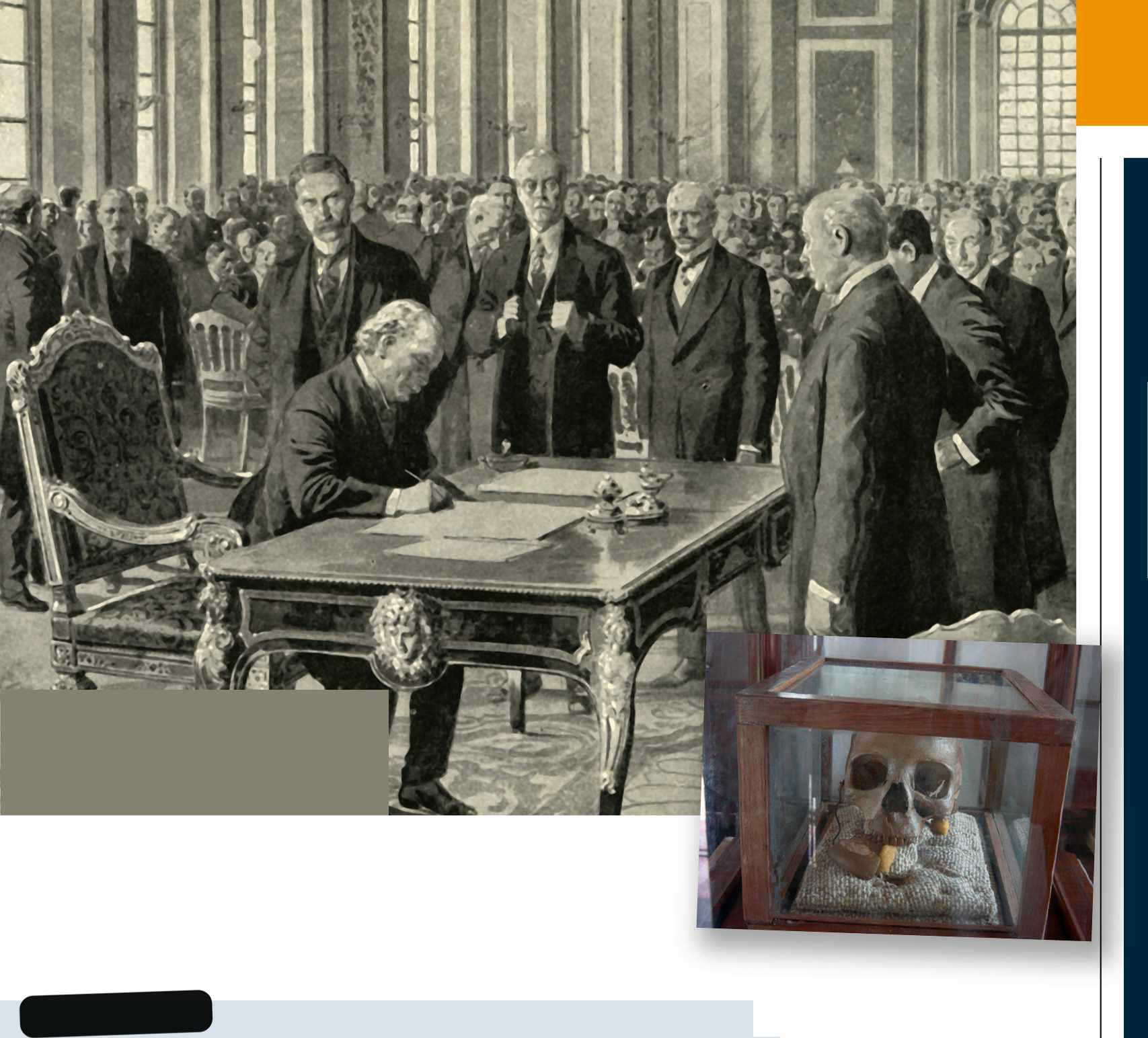


Chief Mkwawa’s
LONG ANSWER On 23 January 1897, Zona
Heaster Shue was found dead at her home in Greenbrier County, West Virginia, due to complications from pregnancy. That was the hasty verdict of the doctor anyway. The problem was that he only examined the body after her husband, Edward, had laid her out in a high-neck dress. He also seemed uneasy about anyone touching her.

LONG ANSWER
Signed in June 1919, the Treaty of Versailles laid out the peace terms for the end of World War I. It didn’t make pretty reading for Germany, which was held responsible for the war and dealt a whole host of severe punishments, including demilitarisation, territorial concessions and reparation payments. Tucked away in the hundreds of clauses was another demand: a human skull.
It was the skull of Chief Mkwawa, a Hehe tribal leader in east Africa (mainly modern-day Tanzania) and leader of a guerrilla campaign against German colonialism. He had died in 1898, taking his own life
rather than be captured, and his head was taken as a gruesome trophy to Berlin. More than two decades later, the Treaty of Versailles offered an opportunity for the British to get it returned, and so demonstrate that they were now the ones who were in charge in east Africa.
Admittedly, the Germans took a little longer than the six-month deadline to hand over the skull: 34 years. Even then, it may not have been Mkwawa’s at all. In 1953, British diplomat Edward Twining picked what he thought to be the correct skull from the dozens of options presented to him fitting the physical criteria, such as a bullet wound.



Suspicious yet? So were many in the community, and things only got stranger after the funeral. Four nights in a row, Zona’s mother Mary Jane Heaster had dreams in which her daughter appeared and said Edward had broken her neck. The apparition even swivelled her head round to prove it.
Soon, there was enough doubt to exhume the body and, sure enough, the neck was broken. Mary Jane repeated her eldritch eyewitness testimony in court and Edward (whose real name was Erasmus and had likely murdered his previous wife) was convicted.
Zona Heaster Shue, seen here while very much alive, allegedly snared her killer from beyond the
According to some people in Newcastle-upon-Tyne, the origins of the Geordie nickname can be traced back to the Jacobite rebellion of 1715, when locals supported the new Hanoverian king George I as opposed to ‘Old Pretender’ James Francis Edward Stuart, who was backed by people in neighbouring Northumberland.
It seems neat enough, but there is another George that might explain the name. A century later, local miners used Geordie safety lamps invented by George Stephenson, preferring it to the model developed at the same time by Humphry Davy. Imagine: if the miners had picked differently, Newcastle residents could have ended up being called Humpies.

When a murder was suspected, the key witness would be the victim herself

Works such as Damien Hirst’s ThePhysical ImpossibilityofDeathintheMindof SomeoneLiving(main) and Marcus Harvey’s Myra (right) whipped the tabloids into a frenzy when Sensationwas unveiled in September 1997
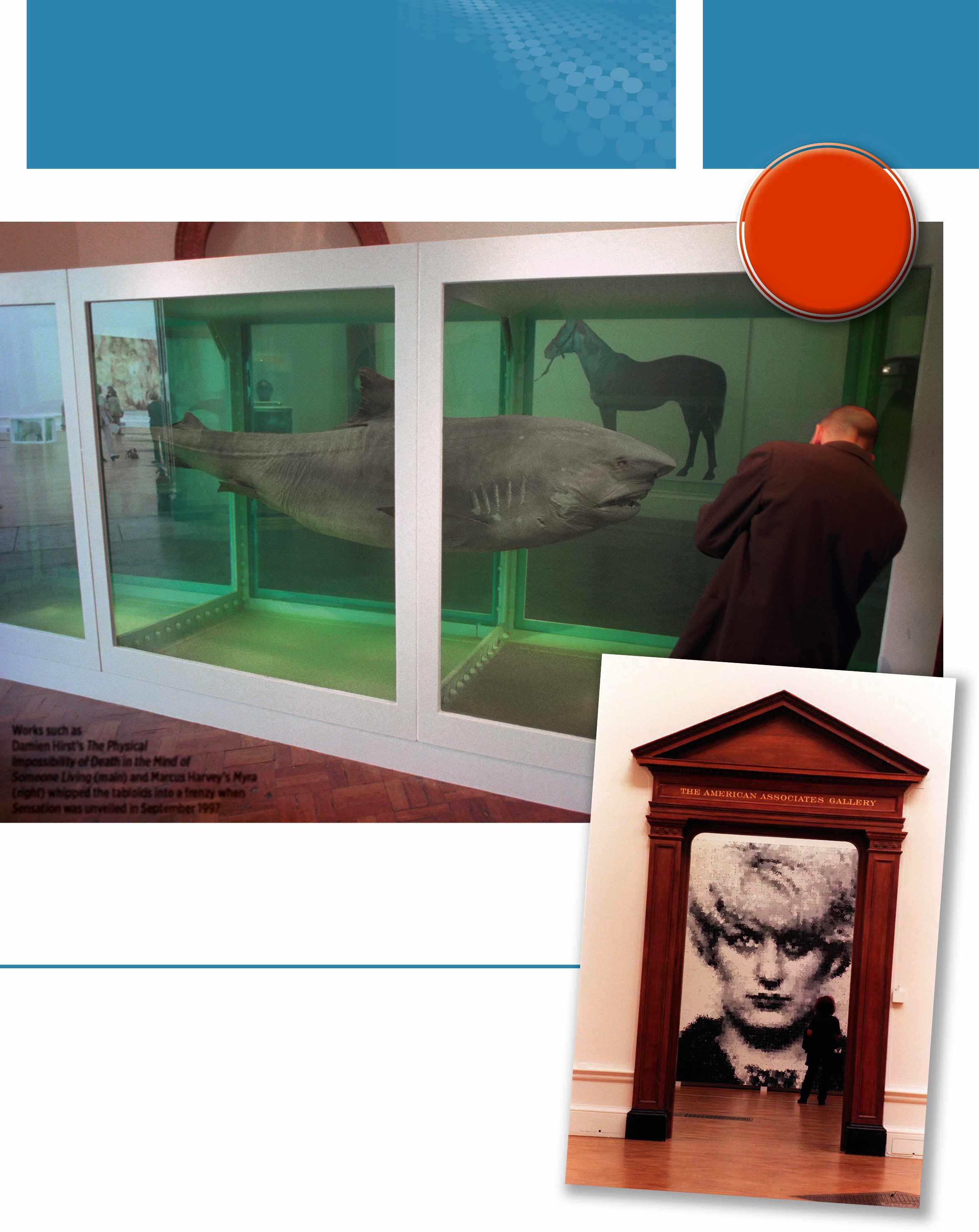
On 18 September 1997, an exhibition of work by contemporary artists opened at London’s Royal Academy of Arts. Consisting of pieces owned by the collector and businessman Charles Saatchi, including many works by those who came to be known as the Young British Artists (YBAs), Sensation caused just that.
Even 25 years later, it’s easy to see why. Entering the exhibition, visitors were warned: “There will be works of art on display in the Sensation exhibition which some people may find distasteful.” Parents were warned to exercise discretion and one gallery was entirely closed to those under the age of 18.
Among the exhibits was Marcus Harvey’s Myra, a 1995 portrait of the Moors murderer Myra Hindley. At first glance, it looks like the famous newspaper image, but it was made using casts of an infant’s hand to create a mosaic of black, grey and white prints. Hindley herself
wrote a letter saying the image should be removed. So controversial did it prove that protesters attacked Myra with ink and eggs. After restoration, it was exhibited behind Perspex and guarded by security men.
Other artworks included Damien Hirst’s tiger shark submerged in formaldehyde; Marc Quinn’s selfportrait made of frozen blood; and Tracey Emin’s Everyone I Have Ever Slept With 1963–1995, a tent featuring the names of all those she had shared a bed with (not necessarily had sex with).
And yet for all the controversy and the newspaper stories, there’s another story here, traced in this three-part documentary about the YBAs. These were artists who, learning their craft in a Thatcherite 1980s world of dole queues and squats, created their own scene, took on the
establishment and, in key ways, won the day.
As Sensation toured to the Hamburger Bahnhof in Berlin and New York’s Brooklyn Museum, here was a time when British art was confident, daring and, unlike so much of the music of the era, looking to the future.
The first episode of the series sees tractor enthusiast Phil (secondfrom left) showing Dave, Rob and Ruth a restored vehicle from World War II
Rob and Dave Nicholson are the personification of modern farmers, men at home in a world of diversification to generate revenue, marketing and, via their appearances on such shows as Channel 5’s Springtime on the Farm, media work. But how would they have coped with the farming cultures of previous years?
It’s a question this series answers by enlisting living history specialist Ruth Goodman (Edwardian Farm, among many other shows) to take them back to three different eras: World War II,

the Victorian period and the Iron Age. In each programme, the Nicholsons learn about the innovations that led to changes in how our forebears lived and worked, which of course involves trying out techniques from the past.
Some of what the brothers learn shocks them. In the 19th century, many day labourers eked out a living so meagre that large numbers emigrated to Britain’s industrial cities. Even a combination of slums, pollution and the appalling conditions in factories was preferable to life in the countryside. “[People] were absolutely throughout their lives on the edges of starvation,” Goodman tells BBC History Revealed “I don’t just mean hungry, I mean absolutely on the edge.”
The episode on the Iron Age shows just how much we owe to innovations in this era Using tough iron-tipped tools rather than relatively soft bronze, our forebears were suddenly able to work land previously impossible to farm. “That means huge population expansion, it means huge development of society and culture and trade,” says Goodman. “It’s a really big moment.”
Rob (far left) and Dave (far right) also take part in a sawing competition with a team of Women’s Land Army reenactors
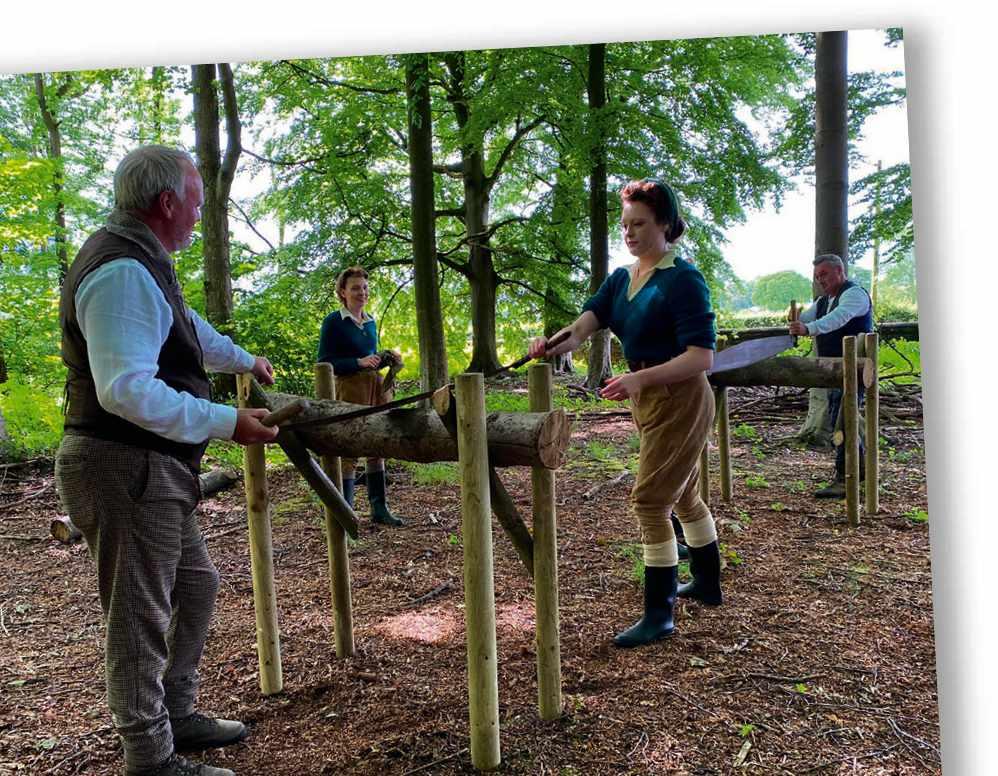

Medusa doesn’t emerge too well from most portrayals. With hair made of living snakes and a gaze that turns those who meet it to stone, she is a Gorgon, a monster to be feared, and someone unmourned when she is beheaded by the Greek hero Perseus.
But what if there’s a different story here? Stone Blind, the new novel from classicist Natalie Haynes, shows Medusa as a woman wronged, transformed into a monster by Athene for an act of sacrilege when the fault lay with the lustful and violent Poseidon.
The book – which is being read over 10 weeknight episodes by This Time with Alan Partridge star Susannah Fielding – also offers a backstory for Medusa as a mortal growing up among gods, and the only one of her sisters to experience ageing, change and weakness.
Art theft is big business. Every year, it’s estimated that art worth £4bn is stolen. For those prepared to take the risk, the illicit art trade ranks behind only the arms and drugs trades in terms of the sums involved. But why would anyone want to take works that are familiar and thus impossible to sell on the open market?
The answer is that much stolen art never makes it way to the legitimate market, but is instead used to facilitate black market deals. That’s because precious pieces, especially paintings, are portable yet highly valuable, ideal for use as collateral. Around 95 per cent of stolen art is never recovered.
That’s not to say pieces aren’t retrieved from the underworld. Around the globe there are specialist art detectives who go up against those who steal and traffic masterpieces. Their cat-and-mouse work is the subject of this three-part series that focuses on the illegal trade in works by three famous artists: the English Romantic JMW Turner (1775–1851), Dutch master Rembrandt (1606–69) and Norwegian painter Edvard Munch (1863–1944).
Details on which specific works would be featured in the series had yet to be announced as BBC History Revealed went to press, except that Munch’s The Scream will certainly feature. Famously, in August 2004, the 1910 version of the painting (there are four versions in total) was stolen from Oslo’s Munch Museum along with another Munch work, Madonna. Both paintings were eventually recovered in 2006, although the circumstances around this remain hazy. There was some damage to the paintings, but both went back on public display after conservation work.
A pair of works by Edvard Munchwere stolen from Oslo’s Munch Museum in 2004 (topright) andrecovered two years later (main)

It’s been one the hottest summers on record, reason enough to want to get to the coast and try to pick up some sea breezes. And while you’re there, you could also go in search of some history, which is precisely what Anita Rani does as she returns to present a second series of Britain by Beach

The stories featured include the tale of how Madog ap Llywelyn led a rebellion against Edward I (r1272–1307) and English rule in Wales. Harlech Castle, where a small garrison came under siege yet successfully resisted, emerges as a key location. We’re also promised stories of Victorian engineering buried beneath the sand in Cornwall and Britain’s worst-ever lifeboat disaster.
Throughout the series, Rani meets historians and also those whose lives have been shaped by events on their local beaches. Plus Rani is always keen to take part, whether that involves fishing using ancient methods, or trying body boarding She even tries painting beneath the White Cliffs of Dover, following in the footsteps of JMW Turner.
One of the wider points of the series is that beaches are not just places we go to relax, but sometimes places where major e h
David Dimbleby’s BBC: A Very British History (title TBC) / BBC Two, September
As part of a series of programmes to mark the BBC’s centenary, David Dimbleby (pictured left in 1972) goes behind the scenes to look at moments in the past 60 years when controversies have affected the BBC and its viewers. Exploring the BBC’s role in major moments of political and cultural change, the series promises to look at how the BBC has maintained its independence and at times when the actions of those who work for the corporation have become the story.
The series will also consider how the BBC tries to engage with a nation that’s more diverse than ever.


 By Emma J Wells Apollo, £40, hardback, 512 pages
By Emma J Wells Apollo, £40, hardback, 512 pages
This visual guide to 16 of the world’s greatest cathedrals – including Istanbul’s Hagia Sophia, the Notre-Dame in Paris, and examples in Wells, York and Westminster – explores the ways in which they represented architectural attempts to connect the human with the divine. Sumptuously presented, with present-day photographs and historical images illuminating each chapter, it’s a fascinating look at how people in the Middle Ages combined spirituality, symbolism, mathematics and monumental toil to create some of history’s grandest buildings.
The way in which Russia has continually reimagined its past is just as important as the past itself. That’s one of the key arguments behind this new history of the nation from leading expert Orlando Figes, which spans its origins to the recent invasion of Ukraine. At once accessible and epic, it features big characters – Ivan the Terrible, Catherine the Great – and big ideas (Figes is great on the ways in which geography has shaped Russia’s mindset). A great introduction to an enthralling subject.

 By Max Adams Apollo, £27.99, hardback, 480 pages
By Max Adams Apollo, £27.99, hardback, 480 pages
We may, in the west, now live in worlds of glittering steel and plastic, but this tribute to timber places wood firmly back into the story of our development. Focusing on six essential devices, including the wheel, the lever, the pulley and the wedge, Max Adams explores the ways in which trees have been intertwined with centuries of history. As 21st-century technology grows ever more complex, his book also serves as a refreshing paean to the power of both nature and human ingenuity.
 By Mary Richards and Rose Blake Thames & Hudson, £14.99, hardback, 96 pages
By Mary Richards and Rose Blake Thames & Hudson, £14.99, hardback, 96 pages
The power of the word, both written and spoken, is celebrated in this vivid illustrated guide aimed at older children. It’s surprisingly detailed –covering everything from the development of languages to famous inspirational speeches – but leavened throughout by lively visuals and comicbook-esque interludes from figures including Cleopatra and Shakespeare. Complete with a detailed glossary and handy timeline, this is an ambitious, accessible overview of an enormous subject.
 By Tova Friedman and Malcolm Brabant Quercus, £20, hardback, 352 pages
By Tova Friedman and Malcolm Brabant Quercus, £20, hardback, 352 pages
Tova Friedman was just five years old when she and her family were sent to a Nazi labour camp. Less than a year later, she was in Auschwitz. In this moving, vivid book, written with journalist Malcolm Brabant, Friedman charts the horrors and degradations of the camps, and the extraordinary story of how her family reunited in Poland. As time passes and the opportunities for Holocaust stories to be told diminishes, such accounts only grow in importance, making this both heartbreaking and powerful reading.
Denver, Colorado, 1933. Luz Lopez and her brother Diego live with their aunt in a onebedroom apartment in the city’s downtown district. Soon, however, everything changes, as Diego is forced to flee from a violent mob and Luz is left to make her own way in the world.
Complicating matters further, she soon has visions of her family’s indigenous homeland, and of dark forces that put her heritage at risk. This is a rich, evocative novel of secrets, stories and survival.

This August marked the 75th anniversary of partition, in which British-ruled India was split into two independent countries – at a terrible human cost. Here, Anwesha Roy answers listener questions and tackles common internet search queries about the events of 1947, offering a concise overview of a dark episode in 20th-century history.



bbc.in/3oTOsQB

The heated debates about what to do with museum artefacts taken from cultures and civilisations around the world shows no sign of cooling soon. This new series tackles the subject head on, as Hanna Adan offers a guided tour to four such objects – including a Benin Bronze and a Chinese ancestral tablet –and what they tell us about the wider issues.
you three of
favourite podcasts

Here’s a curiosity: Lucy Worsley and Greg Jenner in what’s billed as a ‘bonus episode’ of the former’s Lady Killers series, but is actually an opportunity for the two experts to chat about their historical passions, Jenner’s hit podcast You’re Dead to Me, and more. As an added plus, the pair share their tips for excelling at a history quiz.

Unearthed in 2018, the Shropshire sun pendant (pictured above) is among the most important Bronze Age artefacts ever discovered in Britain. After being exhibited in Shrewsbury last year, the 3,000-year-old pendant (or bulla) – is now going on display in Truro, where it will be shown alongside several other treasures of the period.
PAID ENTRY Royal Cornwall Museum, Truro, until 5 November, royalcornwallmuseum.org.uk/exhibition
Every September, thousands of European heritage sites welcome visitors as part of local ‘doors open’ initiatives. Glasgow’s 2022 festival will be special: not only will it be celebrating 40 years of the Glasgow Buildings Preservation Trust, but more than 100 venues will be taking part, from Govanhill Baths to Bridgeton Bus Garage.
FREE ENTRY Various venues across Glasgow, 12–18 September, glasgowdoorsopendays.org.uk
Part of a series of events and exhibitions marking 100 years of the BBC and 40 years of Channel 4, this display at the National Science & Media Museum examines the history of broadcasting in the UK, and how technology has changed the way we enjoy our favourite programmes. Visitors can also learn how electronic music pioneer Delia Derbyshire (pictured) recorded the Doctor Who theme tune, and discover Sir David Attenborough’s role in the launch of colour television.
FREE ENTRY National Science & Media Museum, Bradford, until January 2023, scienceandmediamuseum.org.uk
The stories of the pioneering female pilots and air force personnel who served during World War II are at the heart of this new exhibition on display at Biggin Hill. Packed with interactive exhibits, including a VR Spitfire experience, visitors can learn about the challenges that the women faced – as well as their many triumphs.
PAID ENTRY Biggin Hill Memorial Museum, Kent, open now, bhmm.org.uk/women-and-war



7 Mrs ___, character in the 1775 play The Rivals (8)
9 14th-century epic poem by Petrarch (6)
10 Ancient city in southwest Ireland (4)
11 The Picture of ___, 1891 Oscar Wilde novel (6,4)
12 Archaic Greek poet of Lesbos (6)
14 Albert ___ (1879–1955), German-born patent examiner and physicist (8)
15 Official newspaper of the Communist Party of the Soviet Union (6)
16 Himalayan kingdom known as ‘the Land of the Thunder Dragon’ (6)
19 Patron saint of Catalonia, Moscow, Ethiopia and England (2,6)
21 ___ Riots, 1780 outbreak of anti-Catholic violence in London (6)
23 Tasmania-born actor (1909–59), star of Captain Blood (1935) (5,5)
24 Robert ___ (1788–1850), Conservative statesman, twice prime minister (4)
25 “He’d make a lovely ___” –Mrs Gamp in Martin Chuzzlewit (1844) (6)
26 ___ da Vinci (1452–1519), Renaissance polymath (8)
DOWN
1 ___ War, 1862 conflict between the Santee Sioux and the US government (6)
2 Jonas ___ (1914–95), creator of the polio vaccine (4)
3 West Yorkshire city formerly nicknamed ‘Woolopolis’ (8)
competition is open to all UK residents (inc.
or over,
be
4 City in the Philippines, site of a major battle of 1942 (6)
5 2009 biopic of the poet John Keats (6,4)
6 Byname of Augustus Caesar (died AD 14) (8)
8 Oh, Mr ___!, 1937 comedy film starring Will Hay (6)
13 US volunteer programme founded in 1961 (5,5)
15 Name given to the killing of protesters in Manchester in 1819 (8)
17 1952 Western starring Gary Cooper (4,4)
18 Gertrude ___ (1843–1932), British horticulturist (6)
and
20 The Artists’ ___, army reserve regiment founded in 1859 (6)

Founding nation of the Iroquois Confederacy (6)
Édith ___ (1915–63), French singer (4)
 by Sarah Gristwood
by Sarah Gristwood
Post entries to BBC History Revealed, October 2022 Crossword, PO Box 501, Leicester, LE94 0AA or email them to october2022@historyrevealedcomps.co.uk by noon on 1 November 2022

By entering, participants agree to be bound by the terms and conditions shown in the box below. Immediate Media Co Ltd, publishers of BBCHistoryRevealed, would love to keep you informed by post or telephone of special offers and promotions from the Immediate Media Co Group. Please write ‘Do Not Contact IMC’ if you prefer not to receive such information by post or phone. If you would like to receive this information by email, please write your email address on the entry. You may unsubscribe from receiving these messages at any time. For more about the Immediate Privacy Policy, see the box below.
Branded BBC titles are licensed from or published jointly with BBC Studios (the commercial arm of the BBC). Please tick here l if you’d like to receive regular newsletters, special offers and promotions from BBC Studios by email. Your information will be handled in accordance with the BBC Studios privacy policy: bbcstudios.com/privacy
Entrants must
be
full name, address and daytime phone number.
Media Company (publishers of BBCHistory

) will only ever use personal details for the purposes of administering this competition, and will not publish them or provide them to anyone without permission. Read more about the Immediate Privacy Policy at www.immediatemedia.co.uk/privacy-policy.
The winning entrants will be the first correct entries
drawn at random after the closing time. The prize and number of winners will be as shown on the Crossword page. There is no cash alternative and the prize will not be transferable. Immediate Media Company London Limited’s decision is final and no correspondence relating to the competition will be entered into. The winners will be notified by post within 28 days of the close of the competition. The name and county of residence of the winners will be published in the magazine within two months of the closing date.
If the winner is unable to be contacted within one
month of the closing date, Immediate Media Company London Limited reserves the right to offer the prize to a runner-up.
Immediate Media Company London Limited reserves the right to amend these terms and conditions or to cancel, alter or amend the promotion at any stage, if deemed necessary in its opinion, or if circumstances arise outside of its control. The promotion is subject to the laws of England. Promoter: Immediate Media Company London Limited


Editor Charlotte Hodgman
Production
Content
Evans
Marina Amaral, Joanne Berry, Rob Blackmore, Michael Cocks, Ed Crooks, Nell Darby, Rhiannon Davies, Matt Elton, Sophie Hay, James Holland, Clare Jackson, Dan Jones, Tilar J Mazzeo, Lisa Moses, Gordon O’Sullivan, Sabine Pénot, Rosemary Smith, Richard Smyth, Nige Tassell, Jonny Wilkes, Jonathan Wright
Lee natasha.lee@immediate.co.uk

ADVERTISING
Sam Jones
Senior
Evanson
Luscombe
Group
Jacky Perales-Morris


Women’s football may be enjoying something of a renaissance – thanks in part to the England team’s recent victory at the UEFA European Women’s Championship – but female participation in the beautiful game hasn’t always been so encouraged. Despite its growing popularity during World War I, women’s football was banned by the Football Association (FA) in 1921 for being “quite unsuitable for females” and relegated to park kickabouts and unauthorised matches. Undeterred, women continued to play, and in 1957, the Manchester Corinthians team represented England at an unofficial European tournament held in West Germany, where women’s football had been outlawed for two years: England’s powerhouse team beat their opponents 4–0. An entirely separate women’s association was set up in 1969 (which existed until 1993), but it wasn’t until 1971 that the FA finally lifted the ban on women playing at the grounds of its affiliated clubs.












